Zone
Crash of a Boeing 747-412F in Halifax
Date & Time:
Nov 7, 2018 at 0506 LT
Registration:
N908AR
Survivors:
Yes
Schedule:
Chicago – Halifax
MSN:
28026/1105
YOM:
1997
Flight number:
KYE4854
Crew on board:
3
Crew fatalities:
Pax on board:
1
Pax fatalities:
Other fatalities:
Total fatalities:
0
Captain / Total hours on type:
166.00
Copilot / Total hours on type:
1239
Aircraft flight hours:
92471
Aircraft flight cycles:
16948
Circumstances:
The Sky Lease Cargo Boeing 747-412F aircraft (U.S. registration N908AR, serial number 28026) was conducting flight 4854 (KYE4854) from Chicago/O’Hare International Airport, Illinois, U.S., to Halifax/Stanfield International Airport, Nova Scotia, with 3 crew members, 1 passenger, and no cargo on board. The crew conducted the Runway 14 instrument landing system approach. When the aircraft was 1 minute and 21 seconds from the threshold, the crew realized that there was a tailwind; however, they did not recalculate the performance data to confirm that the landing distance available was still acceptable, likely because of the limited amount of time available before landing. The unexpected tailwind resulted in a greater landing distance required, but this distance did not exceed the length of the runway. The aircraft touched down firmly at approximately 0506 Atlantic Standard Time, during the hours of darkness. After the firm touchdown, for undetermined reasons, the engine No. 1 thrust lever was moved forward of the idle position, causing the speed brakes to retract and the autobrake system to disengage, increasing the distance required to bring the aircraft to a stop. In addition, the right crab angle (4.5°) on initial touchdown, combined with the crosswind component and asymmetric reverser selection, caused the aircraft to deviate to the right of the runway centreline. During the landing roll, the pilot monitoring’s attention was focused on the lateral drift and, as a result, the required callouts regarding the position of the deceleration devices were not made. Although manual brake application began 8 seconds after touchdown, maximum braking effort did not occur until 15 seconds later, when the aircraft was 800 feet from the end of the runway. At this position, it was not possible for the aircraft to stop on the runway and, 5 seconds later, the aircraft departed the end of the runway at a speed of 77 knots and came to a stop 270 m (885 feet) past the end. The aircraft struck the approach light stanchions and the localizer antenna array. The No. 2 engine detached from its pylon during the impact sequence and came to rest under the left horizontal stabilizer, causing a fire in the tail section following the impact. The emergency locator transmitter activated. Aircraft rescue and firefighting personnel responded. All 3 crew members received minor injuries and were taken to the hospital. The passenger was not injured. During the overrun, the aircraft crossed a significant drop of 2.8 m (9 feet) approximately 166 m (544 feet) past the end of the runway and was damaged beyond repair.
Probable cause:
Findings as to causes and contributing factors:
These are conditions, acts or safety deficiencies that were found to have caused or contributed to this occurrence.
1. The ineffective presentation style and sequence of the NOTAMs available to the crew and flight dispatch led them to interpret that Runway 23 was not available for landing at Halifax/Stanfield International Airport.
2. The crew was unaware that the aircraft did not meet the pre-departure landing weight requirements using flaps 25 for Runway 14.
3. Due to the timing of the flight during the nighttime circadian trough and because the crew had had insufficient restorative sleep in the previous 24 hours, the crew was experiencing sleep-related fatigue that degraded their performance and cognitive functioning during the approach and landing.
4. Using unfactored (actual) landing distance charts may have given the crew the impression that landing on Runway 14 would have had a considerable runway safety margin, influencing their decision to continue the landing in the presence of a tailwind.
5. When planning the approach, the crew calculated a faster approach speed of reference speed + 10 knots instead of the recommended reference speed + 5 knots, because they misinterpreted that a wind additive was required for the existing conditions.
6. New information regarding a change of active runway was not communicated by air traffic control directly to the crew, although it was contained within the automatic terminal information service broadcast; as a result, the crew continued to believe that the approach and landing to Runway 14 was the only option available.
7. For the approach, the crew selected the typical flap setting of flaps 25 rather than flaps 30, because they believed they had a sufficient safety margin. This setting increased the landing distance required by 494 feet.
8. The crew were operating in a cognitive context of fatigue and biases that encouraged anchoring to and confirming information that aligned with continuing the initial plan, increasing the likelihood that they would continue the approach.
9. The crew recognized the presence of a tailwind on approach 1 minute and 21 seconds from the threshold; likely due to this limited amount of time, the crew did not recalculate the performance data to confirm that the runway safety margin was still acceptable.
10. An elevated level of stress and workload on short final approach likely exacerbated the performance-impairing effects of fatigue to limit the crew’s ability to determine the effect of the tailwind, influencing their decision to continue the approach.
11. The higher aircraft approach speed, the presence of a tailwind component, and the slight deviation above the glideslope increased the landing distance required to a distance greater than the runway length available.
12. After the firm touchdown, for undetermined reasons, the engine No. 1 thrust lever was moved forward of the idle position, causing the speed brakes to retract and the autobrake system to disengage, increasing the distance required to bring the aircraft to a stop.
13. The right crab angle (4.5°) on initial touchdown, combined with the crosswind component and asymmetric reverser selection, caused the aircraft to deviate to the right of the runway centreline.
14. During the landing roll, the pilot monitoring’s attention was focused on the lateral drift and, as a result, the required callouts regarding the position of the deceleration devices were not made.
15. The pilot flying focused on controlling the lateral deviation and, without the benefit of the landing rollout callouts, did not recognize that all of the deceleration devices were not fully deployed and that the autobrake was disengaged.
16. Although manual brake application began 8 seconds after touchdown, maximum braking effort did not occur until 15 seconds later, when the aircraft was 800 feet from the end of the runway. At this position, it was not possible for the aircraft to stop on the runway and, 5 seconds later, the aircraft departed the end of the runway at a speed of 77 knots and came to a stop 270 m (885 feet) past the end of the runway.
17. During the overrun, the aircraft crossed a significant drop of 2.8 m (9 feet) approximately 166 m (544 feet) past the end of the runway and was damaged beyond repair. While this uneven terrain was beyond the 150 m (492 feet) runway end safety area proposed by Transport Canada, it was within the recommended International Civil Aviation Organization runway end safety area of 300 m (984 feet).
Findings as to risk:
These are conditions, unsafe acts or safety deficiencies that were found not to be a factor in this occurrence but could have adverse consequences in future occurrences.
1. If the pilot monitoring does not call out approach conditions or approach speed increases, the pilot flying might not make corrections, increasing the risk of a runway overrun.
Other findings:
These items could enhance safety, resolve an issue of controversy, or provide a data point for future safety studies.
1. The investigation concluded that there was no reverted rubber hydroplaning and almost certainly no dynamic hydroplaning during this occurrence.
2. Although viscous hydroplaning can be expected on all wet runways, the investigation found that when maximum braking effort was applied, the aircraft braking was consistent with the expected braking on Runway 14 under the existing wet runway conditions.
These are conditions, acts or safety deficiencies that were found to have caused or contributed to this occurrence.
1. The ineffective presentation style and sequence of the NOTAMs available to the crew and flight dispatch led them to interpret that Runway 23 was not available for landing at Halifax/Stanfield International Airport.
2. The crew was unaware that the aircraft did not meet the pre-departure landing weight requirements using flaps 25 for Runway 14.
3. Due to the timing of the flight during the nighttime circadian trough and because the crew had had insufficient restorative sleep in the previous 24 hours, the crew was experiencing sleep-related fatigue that degraded their performance and cognitive functioning during the approach and landing.
4. Using unfactored (actual) landing distance charts may have given the crew the impression that landing on Runway 14 would have had a considerable runway safety margin, influencing their decision to continue the landing in the presence of a tailwind.
5. When planning the approach, the crew calculated a faster approach speed of reference speed + 10 knots instead of the recommended reference speed + 5 knots, because they misinterpreted that a wind additive was required for the existing conditions.
6. New information regarding a change of active runway was not communicated by air traffic control directly to the crew, although it was contained within the automatic terminal information service broadcast; as a result, the crew continued to believe that the approach and landing to Runway 14 was the only option available.
7. For the approach, the crew selected the typical flap setting of flaps 25 rather than flaps 30, because they believed they had a sufficient safety margin. This setting increased the landing distance required by 494 feet.
8. The crew were operating in a cognitive context of fatigue and biases that encouraged anchoring to and confirming information that aligned with continuing the initial plan, increasing the likelihood that they would continue the approach.
9. The crew recognized the presence of a tailwind on approach 1 minute and 21 seconds from the threshold; likely due to this limited amount of time, the crew did not recalculate the performance data to confirm that the runway safety margin was still acceptable.
10. An elevated level of stress and workload on short final approach likely exacerbated the performance-impairing effects of fatigue to limit the crew’s ability to determine the effect of the tailwind, influencing their decision to continue the approach.
11. The higher aircraft approach speed, the presence of a tailwind component, and the slight deviation above the glideslope increased the landing distance required to a distance greater than the runway length available.
12. After the firm touchdown, for undetermined reasons, the engine No. 1 thrust lever was moved forward of the idle position, causing the speed brakes to retract and the autobrake system to disengage, increasing the distance required to bring the aircraft to a stop.
13. The right crab angle (4.5°) on initial touchdown, combined with the crosswind component and asymmetric reverser selection, caused the aircraft to deviate to the right of the runway centreline.
14. During the landing roll, the pilot monitoring’s attention was focused on the lateral drift and, as a result, the required callouts regarding the position of the deceleration devices were not made.
15. The pilot flying focused on controlling the lateral deviation and, without the benefit of the landing rollout callouts, did not recognize that all of the deceleration devices were not fully deployed and that the autobrake was disengaged.
16. Although manual brake application began 8 seconds after touchdown, maximum braking effort did not occur until 15 seconds later, when the aircraft was 800 feet from the end of the runway. At this position, it was not possible for the aircraft to stop on the runway and, 5 seconds later, the aircraft departed the end of the runway at a speed of 77 knots and came to a stop 270 m (885 feet) past the end of the runway.
17. During the overrun, the aircraft crossed a significant drop of 2.8 m (9 feet) approximately 166 m (544 feet) past the end of the runway and was damaged beyond repair. While this uneven terrain was beyond the 150 m (492 feet) runway end safety area proposed by Transport Canada, it was within the recommended International Civil Aviation Organization runway end safety area of 300 m (984 feet).
Findings as to risk:
These are conditions, unsafe acts or safety deficiencies that were found not to be a factor in this occurrence but could have adverse consequences in future occurrences.
1. If the pilot monitoring does not call out approach conditions or approach speed increases, the pilot flying might not make corrections, increasing the risk of a runway overrun.
Other findings:
These items could enhance safety, resolve an issue of controversy, or provide a data point for future safety studies.
1. The investigation concluded that there was no reverted rubber hydroplaning and almost certainly no dynamic hydroplaning during this occurrence.
2. Although viscous hydroplaning can be expected on all wet runways, the investigation found that when maximum braking effort was applied, the aircraft braking was consistent with the expected braking on Runway 14 under the existing wet runway conditions.
Final Report:
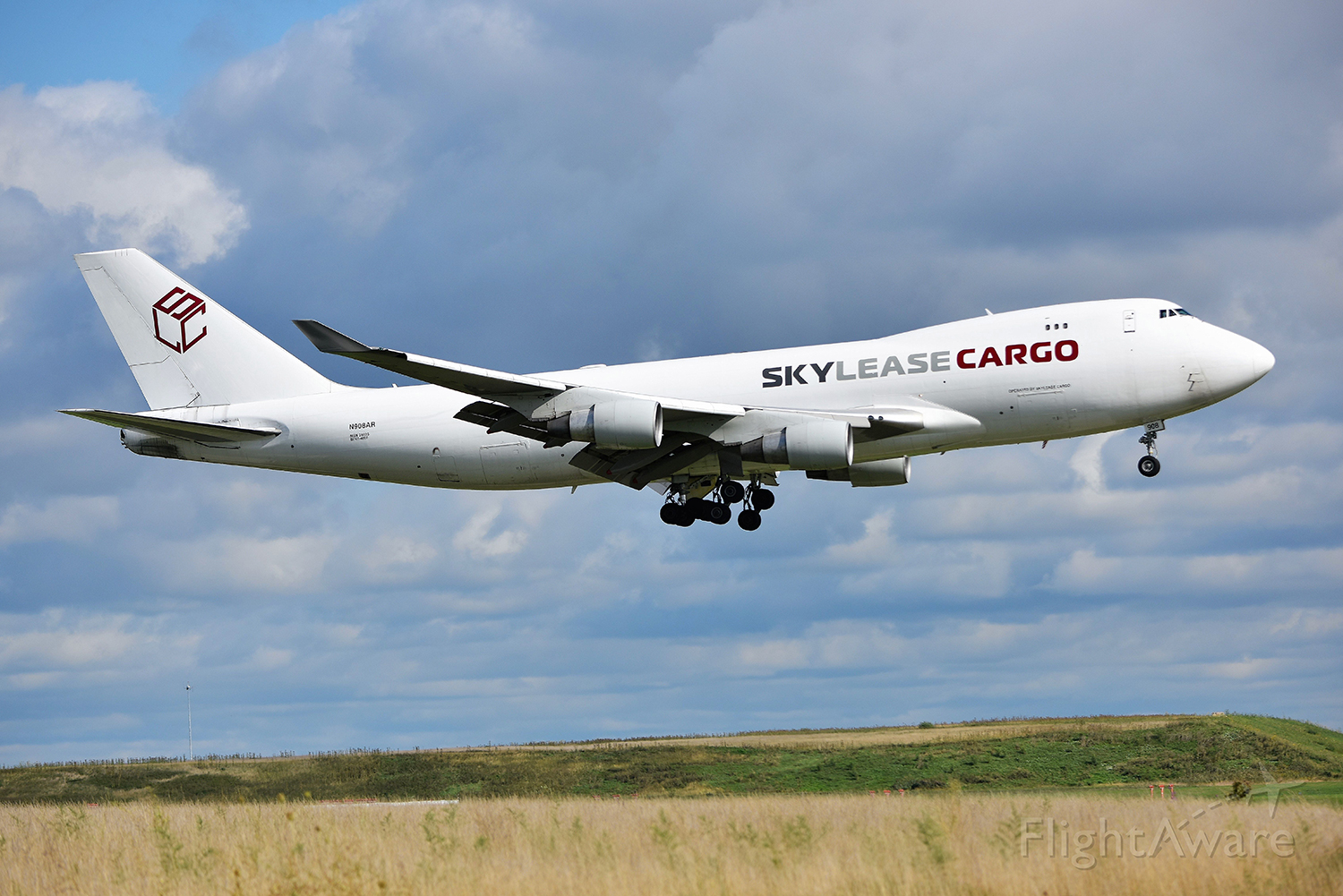
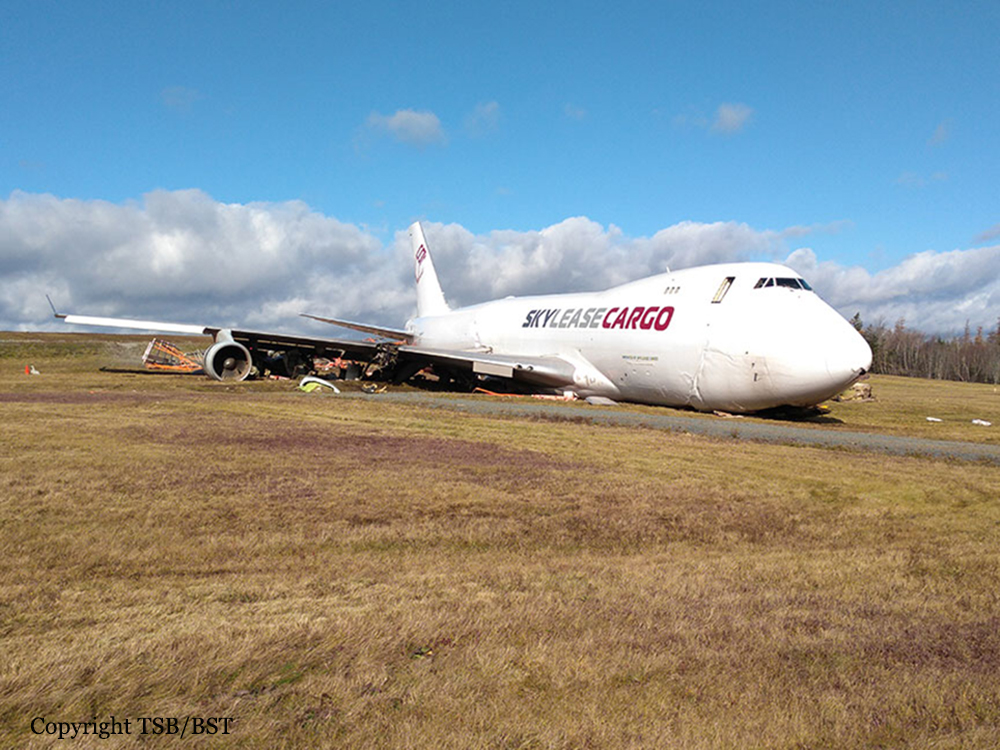
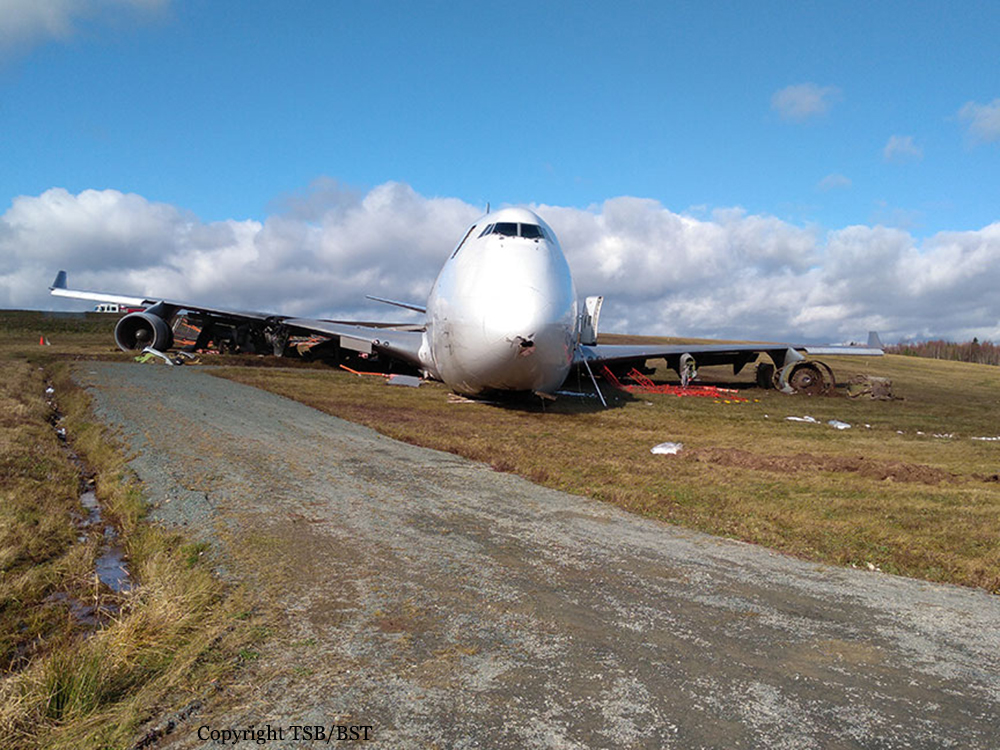
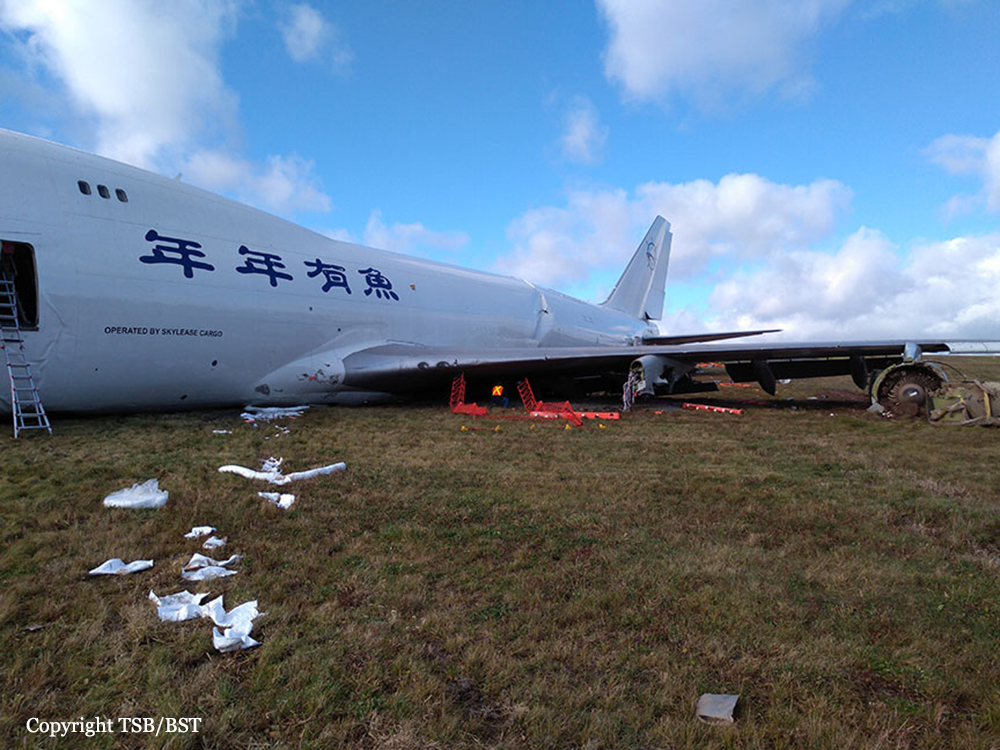
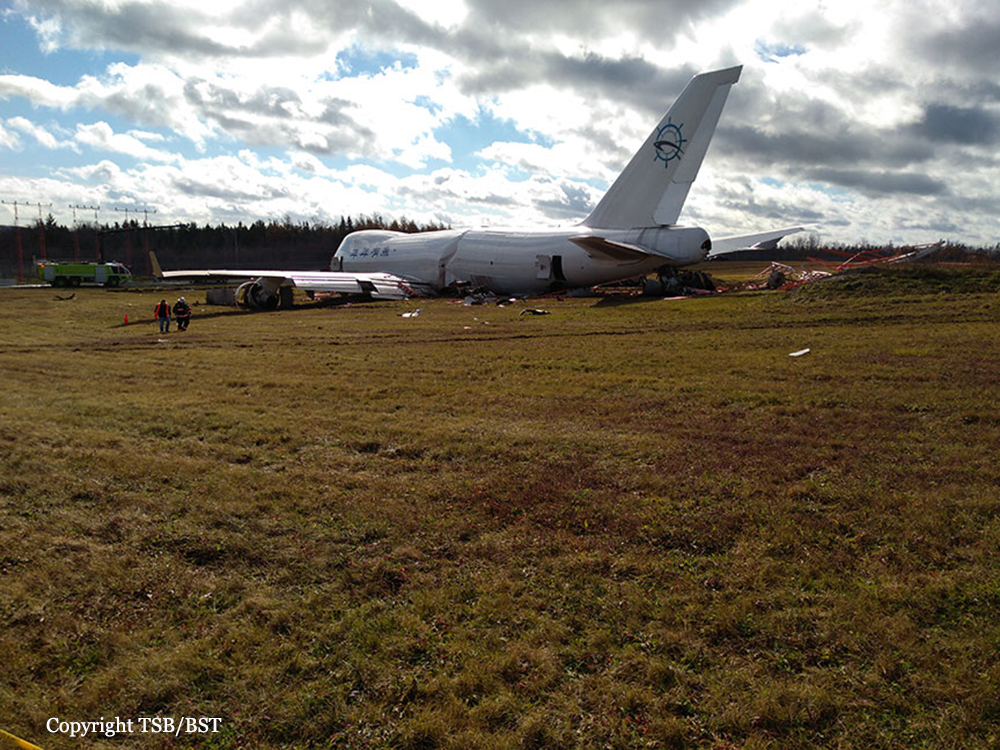
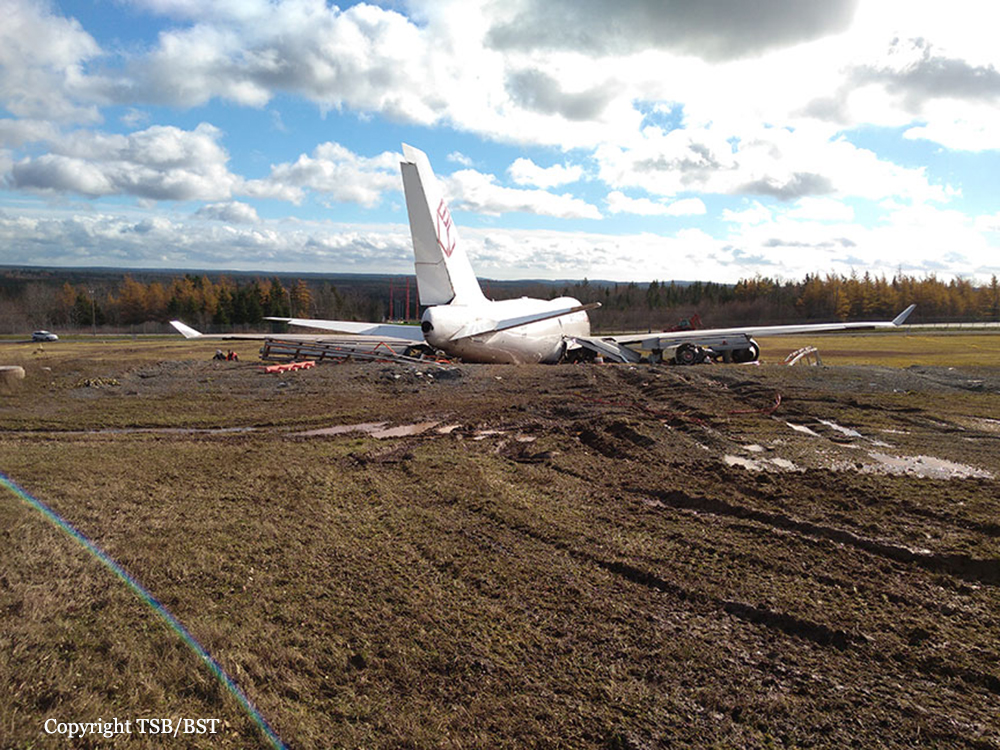
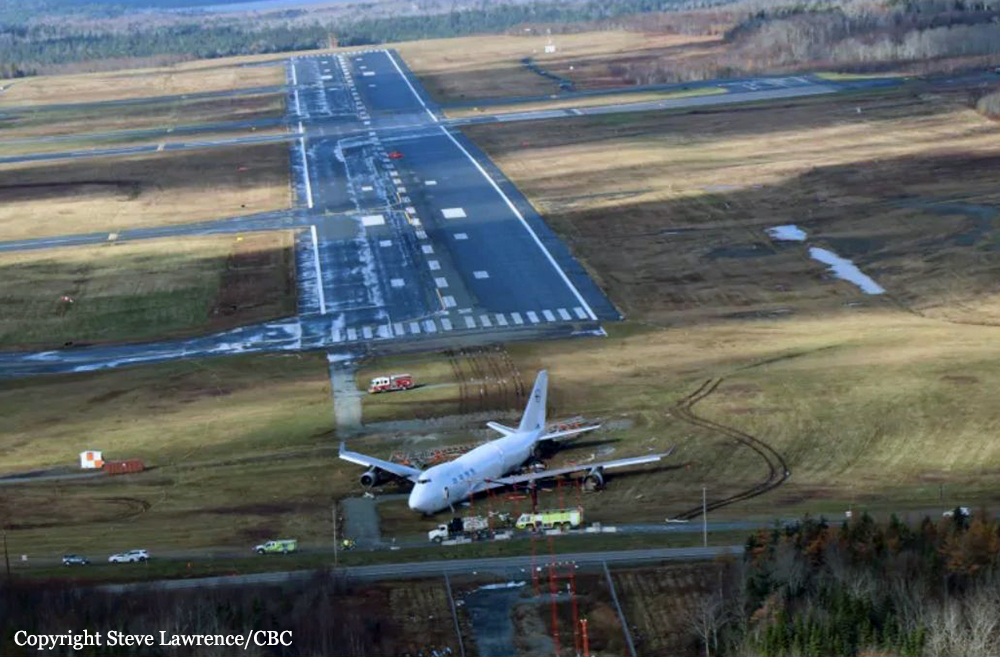
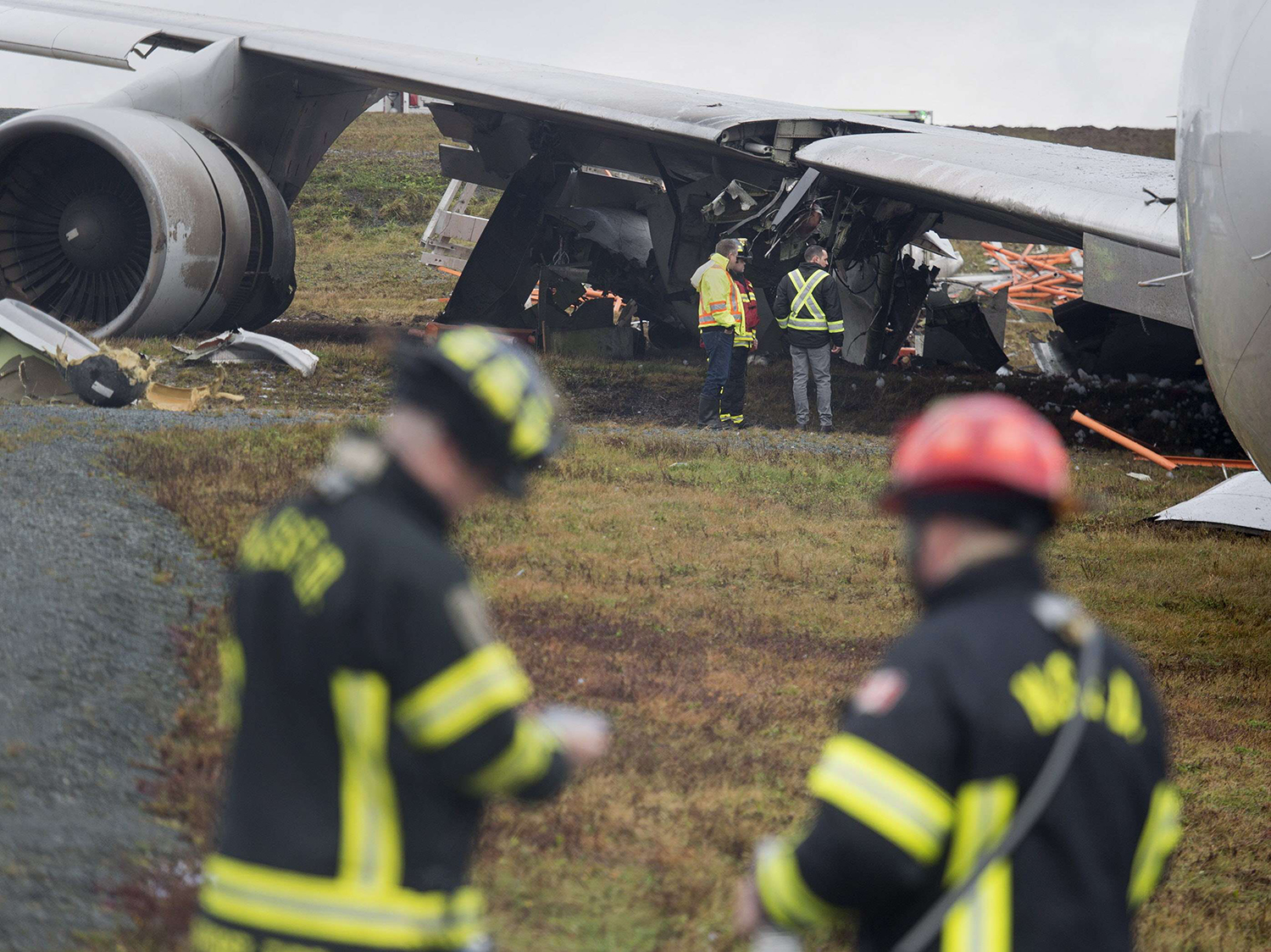

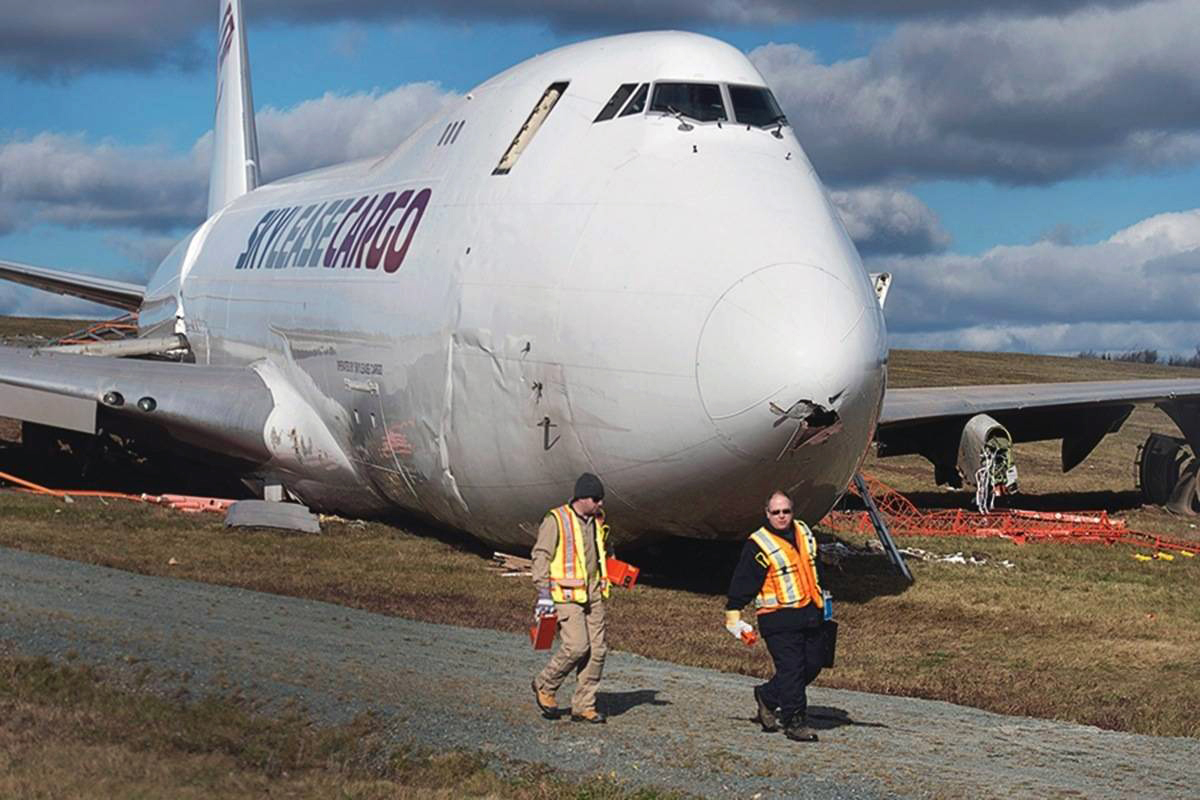
Crash of a Beechcraft A100 King Air in Margaree
Date & Time:
Aug 16, 2015 at 1616 LT
Registration:
C-FDOR
Survivors:
Yes
Schedule:
Halifax – Margaree
MSN:
B-103
YOM:
1972
Crew on board:
2
Crew fatalities:
Pax on board:
2
Pax fatalities:
Other fatalities:
Total fatalities:
0
Captain / Total hours on type:
298.00
Copilot / Total hours on type:
70
Aircraft flight hours:
14345
Circumstances:
On 16 August 2015, a Maritime Air Charter Limited Beechcraft King Air A100 (registration C-FDOR, serial number B-103) was on a charter flight from Halifax Stanfield International Airport, Nova Scotia, to Margaree Aerodrome, Nova Scotia, with 2 pilots and 2 passengers on board. At approximately 1616 Atlantic Daylight Time, while conducting a visual approach to Runway 01, the aircraft touched down hard about 263 feet beyond the threshold. Almost immediately, the right main landing gear collapsed, then the right propeller and wing contacted the runway. The aircraft slid along the runway for about 1350 feet, then veered right and departed off the side of the runway. It came to rest about 1850 feet beyond the threshold and 22 feet from the runway edge. There were no injuries and there was no post-impact fire. The aircraft was substantially damaged. The occurrence took place during daylight hours. The 406-megahertz emergency locator transmitter did not activate.
Probable cause:
Findings:
Findings as to causes and contributing factors:
1. Neither pilot had considered that landing on a short runway at an unfamiliar aerodrome with known high terrain nearby and joining the circuit directly on a left base were hazards that may create additional risks, all of which would increase the crew’s workload.
2. The presence of the tower resulted in the pilot not flying focusing his attention on monitoring the aircraft’s location, rather than on monitoring the flight or the actions of the pilot flying.
3. The crew’s increased workload, together with the unexpected distraction of the presence of the tower, led to a reduced situational awareness that caused them to omit the Landing Checks checklist.
4. At no time during the final descent was the engine power increased above about 400 foot-pounds of torque.
5. Using only pitch to control the rate of descent prevented the pilot flying from precisely controlling the approach, which would have ensured that the flare occurred at the right point and at the right speed.
6. Neither pilot recognized that the steep rate of descent was indicative of an unstable approach.
7. Advancing the propellers to full would have increased the drag and further increased the rate of descent, exacerbating the already unstable approach.
8. The aircraft crossed the runway threshold with insufficient energy to arrest the rate of descent in the landing flare, resulting in a hard landing that caused the right main landing gear to collapse.
Findings as to risk:
1. If data recordings are not available to an investigation, then the identification and communication of safety deficiencies to advance transportation safety may be precluded.
2. If organizations do not use modern safety management practices, then there is an increased risk that hazards will not be identified and risks will not be mitigated.
3. If passenger seats installed in light aircraft are not equipped with shoulder harnesses, then there is an increased risk of passenger injury or death in the event of an accident.
4. If the experience and proficiency of pilots are not factored into crew selection, then there is a risk of suboptimal crew pairing, resulting in a reduction of safety margins.
5. If pilots do not carry out checklists in accordance with the company’s and manufacturer’s instructions, then there is a risk that a critical item may be missed, which could jeopardize the safety of the flight.
6. If crew resource management is not used and continuously fostered, then there is a risk that pilots will be unprepared to avoid or mitigate crew errors encountered during flight.
7. If organizations do not have a clearly defined go-around policy, then there is a risk that flight crews will continue an unstable approach, increasing the risk of an approach-and-landing accident.
8. If pilots are not prepared to conduct a go-around on every approach, then there is a risk that they may not respond to situations that require a go-around.
9. If operators do not have a stable approach policy, then there is a risk that an unstable approach will be continued to a landing, increasing the risk of an approach-andlanding accident.
10. If an organization’s safety culture does not fully promote the goals of a safety management system, then it is unlikely that it will be effective in reducing risk.
Other findings:
1. There were insufficient forward impact forces to automatically activate the emergency locator transmitter.
Findings as to causes and contributing factors:
1. Neither pilot had considered that landing on a short runway at an unfamiliar aerodrome with known high terrain nearby and joining the circuit directly on a left base were hazards that may create additional risks, all of which would increase the crew’s workload.
2. The presence of the tower resulted in the pilot not flying focusing his attention on monitoring the aircraft’s location, rather than on monitoring the flight or the actions of the pilot flying.
3. The crew’s increased workload, together with the unexpected distraction of the presence of the tower, led to a reduced situational awareness that caused them to omit the Landing Checks checklist.
4. At no time during the final descent was the engine power increased above about 400 foot-pounds of torque.
5. Using only pitch to control the rate of descent prevented the pilot flying from precisely controlling the approach, which would have ensured that the flare occurred at the right point and at the right speed.
6. Neither pilot recognized that the steep rate of descent was indicative of an unstable approach.
7. Advancing the propellers to full would have increased the drag and further increased the rate of descent, exacerbating the already unstable approach.
8. The aircraft crossed the runway threshold with insufficient energy to arrest the rate of descent in the landing flare, resulting in a hard landing that caused the right main landing gear to collapse.
Findings as to risk:
1. If data recordings are not available to an investigation, then the identification and communication of safety deficiencies to advance transportation safety may be precluded.
2. If organizations do not use modern safety management practices, then there is an increased risk that hazards will not be identified and risks will not be mitigated.
3. If passenger seats installed in light aircraft are not equipped with shoulder harnesses, then there is an increased risk of passenger injury or death in the event of an accident.
4. If the experience and proficiency of pilots are not factored into crew selection, then there is a risk of suboptimal crew pairing, resulting in a reduction of safety margins.
5. If pilots do not carry out checklists in accordance with the company’s and manufacturer’s instructions, then there is a risk that a critical item may be missed, which could jeopardize the safety of the flight.
6. If crew resource management is not used and continuously fostered, then there is a risk that pilots will be unprepared to avoid or mitigate crew errors encountered during flight.
7. If organizations do not have a clearly defined go-around policy, then there is a risk that flight crews will continue an unstable approach, increasing the risk of an approach-and-landing accident.
8. If pilots are not prepared to conduct a go-around on every approach, then there is a risk that they may not respond to situations that require a go-around.
9. If operators do not have a stable approach policy, then there is a risk that an unstable approach will be continued to a landing, increasing the risk of an approach-andlanding accident.
10. If an organization’s safety culture does not fully promote the goals of a safety management system, then it is unlikely that it will be effective in reducing risk.
Other findings:
1. There were insufficient forward impact forces to automatically activate the emergency locator transmitter.
Final Report:

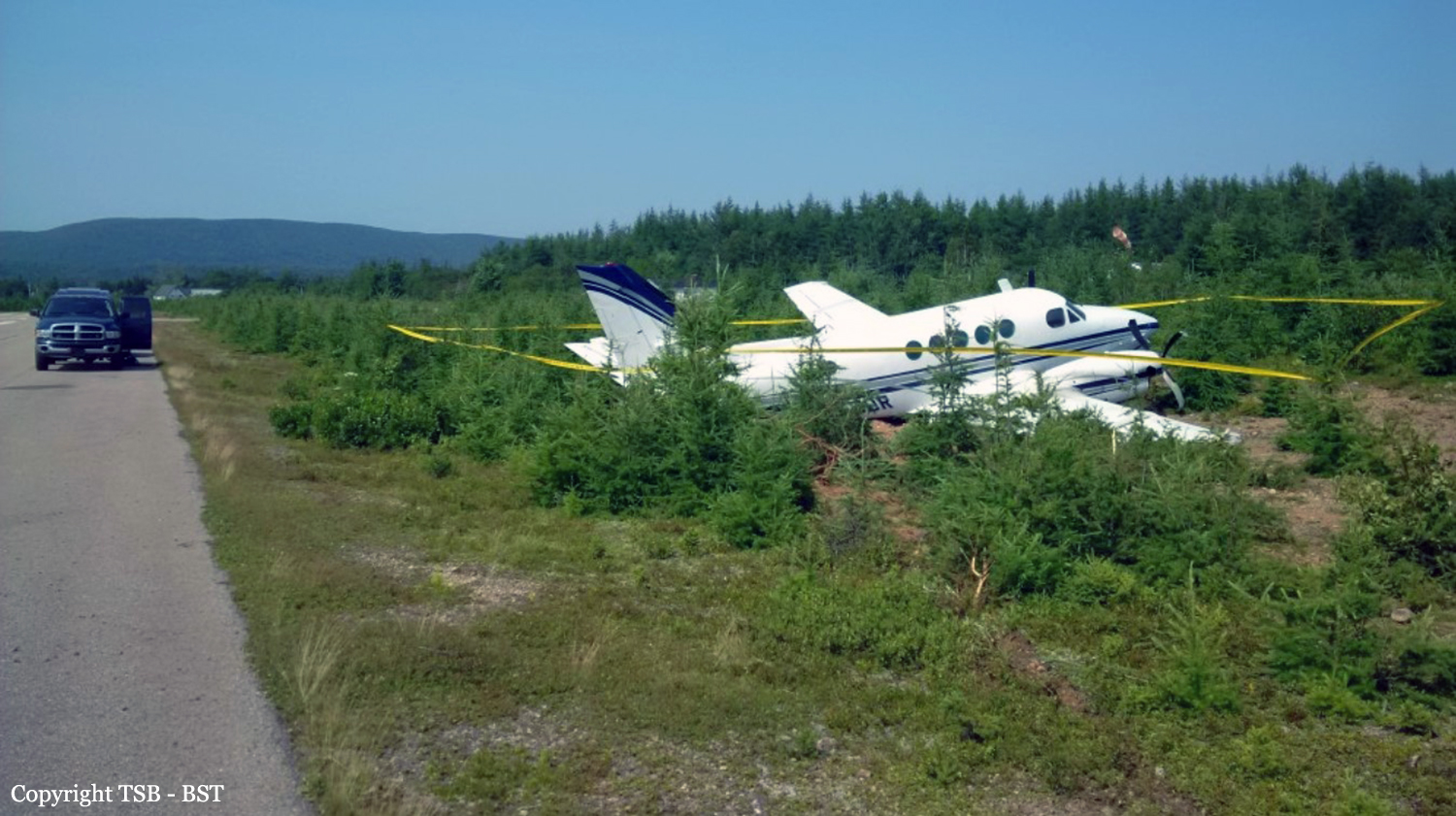
Crash of an Airbus A320-211 in Halifax
Date & Time:
Mar 29, 2015 at 0030 LT
Registration:
C-FTJP
Survivors:
Yes
Schedule:
Toronto – Halifax
MSN:
233
YOM:
1991
Flight number:
AC624
Crew on board:
5
Crew fatalities:
Pax on board:
133
Pax fatalities:
Other fatalities:
Total fatalities:
0
Captain / Total hours on type:
5755.00
Copilot / Total hours on type:
6392
Aircraft flight hours:
75103
Circumstances:
On 29 March 2015, an Air Canada Airbus Industrie A320-211 (registration C-FTJP, serial number 233), operating as Air Canada flight 624, was on a scheduled flight from Toronto/Lester B. Pearson International Airport, Ontario, to Halifax/Stanfield International Airport, Nova Scotia, with 133 passengers and 5 crew members on board. At approximately 0030 Atlantic Daylight Time, while conducting a non-precision approach to Runway 05, the aircraft severed power lines, then struck the snow-covered ground about 740 feet before the runway threshold. The aircraft continued airborne through the localizer antenna array, then struck the ground twice more before sliding along the runway. It came to rest on the left side of the runway, about 1900 feet beyond the threshold. The aircraft was evacuated; 25 people sustained injuries and were taken to local hospitals. The aircraft was destroyed. There was no post-impact fire. The emergency locator transmitter was not activated. The accident occurred during the hours of darkness.
Probable cause:
Findings as to causes and contributing factors:
1. Air Canada’s standard operating procedure (SOP) and practice when flying in flight path angle guidance mode was that, once the aircraft was past the final approach fix, the flight crews were not required to monitor the aircraft’s altitude and distance from the threshold or to make any adjustments to the flight path angle. This practice was not in accordance with the flight crew operating manuals of Air Canada or Airbus.
2. As per Air Canada’s practice, once the flight path angle was selected and the aircraft began to descend, the flight crew did not monitor the altitude and distance from the threshold, nor did they make any adjustments to the flight path angle.
3. The flight crew did not notice that the aircraft had drifted below and diverged from the planned vertical descent angle flight profile, nor were they aware that the aircraft had crossed the minimum descent altitude further back from the threshold.
4. Considering the challenging conditions to acquire and maintain the visual cues, it is likely the flight crew delayed disconnecting the autopilot until beyond the minimum descent altitude because of their reliance on the autopilot system.
5. The approach and runway lights were not changed from setting 4 to setting 5; therefore, these lights were not at their maximum brightness setting during the approach.
6. The system to control the airfield lighting’s preset selections for brightness setting 4 was not in accordance with the NAV CANADA Air Traffic Control Manual of Operations requirement for the omnidirectional approach lighting system to be at its brightest settings.
7. The limited number of visual cues and the short time that they were available to the flight crew, combined with potential visual illusions and the reduced brightness of the approach and runway lights, diminished the flight crew’s ability to detect that the aircraft’s approach path was taking it short of the runway.
8. The flight crew’s recognition that the aircraft was too low during the approach would have been delayed because of plan continuation bias.
9. The aircraft struck terrain approximately 740 feet short of the runway threshold, bounced twice, and then slid along the runway before coming to a rest approximately 1900 feet beyond the runway threshold.
10. At some time during the impact sequence, the captain’s head struck the glare shield because there were insufficient acceleration forces to lock the shoulder harness and prevent movement of his upper body.
11. The first officer sustained a head injury and serious injury to the right eye as a result of striking the glare shield because the automatic locking feature of the right-side shoulder-harness inertia reel was unserviceable.
12. A flight attendant was injured by a coffee brewer that came free of its mounting base because its locking system was not correctly engaged.
13. Because no emergency was expected, the passengers and cabin crew were not in a brace position at the time of the initial impact.
14. Most of the injuries sustained by the passengers were consistent with not adopting a brace position.
Findings as to risk:
1. If aircraft cockpit voice recorder installations do not have an independent power supply, additional, potentially valuable information will not be available for an investigation.
2. If Transport Canada does not consistently follow its protocol for the assessment of aeromedical risk and ongoing surveillance in applicants who suffer from obstructive sleep apnea, some of the safety benefit of medical examinations will be lost, increasing the risk that pilots will fly with a medical condition that poses a risk to safety.
3. If new regulations on the use of child-restraint systems are not implemented, lap-held infants and young children are exposed to undue risk and are not provided with a level of safety equivalent to that for adult passengers.
4. If passengers do not dress appropriately for safe travel, they risk being unprepared for adverse weather conditions during an emergency evacuation.
5. If the type of approach lighting system on a runway is not factored into the minimum visibility required to carry out an approach, in conditions of reduced visibility, the lighting available risks being less than adequate for flight crews to assess the aircraft’s position and decide whether or not to continue the approach to a safe landing.
6. If they do not incorporate a means of absorbing forces along their longitudinal axis, vertically mounted, non-structural beams (channels, tubes, etc.) in cargo compartments could penetrate the cabin floor when the fuselage strikes the water or ground, increasing the risk of aircraft occupants being injured or emergency egress being impaired.
7. If an aircraft manufacturer’s maintenance instructions do not include the component manufacturer’s safety-critical test criteria, the component risks not being maintained in an airworthy condition.
8. If there is a complete loss of electrical and battery power and the passenger address system does not have an independent emergency power supply, the passenger address system will be inoperable, and the initial command to evacuate or to convey other emergency instructions may be delayed, putting the safety of passengers and crew at risk.
9. If passengers retrieve or attempt to retrieve their carry-on baggage during an evacuation, they are putting themselves and other passengers at a greater risk of injury or death.
10. If passengers do not pay attention to the pre-departure safety briefings or review the safety-features cards, they may be unprepared to react appropriately in an accident, increasing their risk of injury or death.
11. If an organization’s emergency response plan does not identify all available transportation resources, there is an increased risk that evacuated passengers and crew will not be moved from an accident site in a timely manner.
12. If organizations do not practise transporting persons from an on-airport accident site, they may be insufficiently prepared to react appropriately to an actual accident, which may increase the time required to evacuate the passengers and crew.
Other findings:
1. The service director assessed the evacuation flow as good and determined that there was therefore no need to open the R1 door.
2. The flight attendants stationed in the rear of the aircraft noted no life-threatening hazards. Because no evacuation order had been given, and deplaned passengers and firefighters were observed walking near the rear of the aircraft in an area where the deployment of the rear slides may have created additional hazards or risks, the flight attendants determined that there was no requirement to open the L2 and R2 doors.
3. Although Transport Canada required the dual-exit drill to be implemented in training, it did not require all cabin crew to receive the training before an organization implemented the 1:50 ratio.
4. At the time of the accident, neither the service director nor the flight attendants had received the dual-exit training, nor were they aware of the requirement for such training in order for Air Canada to operate with the exemption allowing 1 flight attendant for each unit of 50 passengers.
5. Although Transport Canada had reviewed and approved Air Canada’s aircraft operating manual and the standard operating procedures (SOPs), it had not identified the discrepancy between the Air Canada SOPs and the Airbus flight crew operating manual regarding the requirement to monitor the aircraft’s vertical flight path beyond the final approach fix when the flight path angle guidance mode is engaged.
6. A discrepancy in the Halifax International Airport Authority’s standby generators’ control circuitry caused the 2 standby generators to stop producing power.
7. Air Canada’s emergency response plan for Halifax/Stanfield International Airport indicated that the airline was responsible for the transportation of passengers from an accident site.
8. Air Canada’s emergency response plan did not identify the airport’s Park’N Fly minibuses as transportation resources. 9. The Halifax International Airport Authority’s emergency response plan did not identify that the airport Park’N Fly mini-buses could be used to transport the uninjured passengers, nor did it provide instructions on when and how to request and dispatch any transportation resources available at the airport.
10. The Air Canada Flight Operations Manual did not identify that the required visual reference should enable the pilot to assess aircraft position and rate of change of position in order to continue the approach to a landing.
11. In Canada, the minimum visibility that is authorized by the operations specification for non-precision approaches does not take into account the type of approach lighting system installed on the runway.
12. It is likely that, during the emergency, a passenger activated the L1 door gust lock release pushbutton while trying to expedite his or her exit, which allowed the door to move freely.
13. The passenger seatbacks were dislodged because the shear pins had sheared, likely as a result of contact with passengers during the impact sequence or emergency egress.
14. Recovery of the uninjured passengers from the accident site was delayed owing to a number of factors, including the severe weather conditions; the failure of the airport’s 2 standby generators to provide backup power after the loss of utility power; the loss of the airport operations radio network; and the lack of arrangements for the dispatch of transportation vehicles until after emergency response services had advised that all passengers were evacuated and the site was all clear.
15. Given that the captain rarely used continuous positive airway pressure therapy, he would have been at risk of experiencing fatigue related to chronic sleep disruption caused by obstructive sleep apnea. However, there was no indication that fatigue played a causal or contributory role in this occurrence.
1. Air Canada’s standard operating procedure (SOP) and practice when flying in flight path angle guidance mode was that, once the aircraft was past the final approach fix, the flight crews were not required to monitor the aircraft’s altitude and distance from the threshold or to make any adjustments to the flight path angle. This practice was not in accordance with the flight crew operating manuals of Air Canada or Airbus.
2. As per Air Canada’s practice, once the flight path angle was selected and the aircraft began to descend, the flight crew did not monitor the altitude and distance from the threshold, nor did they make any adjustments to the flight path angle.
3. The flight crew did not notice that the aircraft had drifted below and diverged from the planned vertical descent angle flight profile, nor were they aware that the aircraft had crossed the minimum descent altitude further back from the threshold.
4. Considering the challenging conditions to acquire and maintain the visual cues, it is likely the flight crew delayed disconnecting the autopilot until beyond the minimum descent altitude because of their reliance on the autopilot system.
5. The approach and runway lights were not changed from setting 4 to setting 5; therefore, these lights were not at their maximum brightness setting during the approach.
6. The system to control the airfield lighting’s preset selections for brightness setting 4 was not in accordance with the NAV CANADA Air Traffic Control Manual of Operations requirement for the omnidirectional approach lighting system to be at its brightest settings.
7. The limited number of visual cues and the short time that they were available to the flight crew, combined with potential visual illusions and the reduced brightness of the approach and runway lights, diminished the flight crew’s ability to detect that the aircraft’s approach path was taking it short of the runway.
8. The flight crew’s recognition that the aircraft was too low during the approach would have been delayed because of plan continuation bias.
9. The aircraft struck terrain approximately 740 feet short of the runway threshold, bounced twice, and then slid along the runway before coming to a rest approximately 1900 feet beyond the runway threshold.
10. At some time during the impact sequence, the captain’s head struck the glare shield because there were insufficient acceleration forces to lock the shoulder harness and prevent movement of his upper body.
11. The first officer sustained a head injury and serious injury to the right eye as a result of striking the glare shield because the automatic locking feature of the right-side shoulder-harness inertia reel was unserviceable.
12. A flight attendant was injured by a coffee brewer that came free of its mounting base because its locking system was not correctly engaged.
13. Because no emergency was expected, the passengers and cabin crew were not in a brace position at the time of the initial impact.
14. Most of the injuries sustained by the passengers were consistent with not adopting a brace position.
Findings as to risk:
1. If aircraft cockpit voice recorder installations do not have an independent power supply, additional, potentially valuable information will not be available for an investigation.
2. If Transport Canada does not consistently follow its protocol for the assessment of aeromedical risk and ongoing surveillance in applicants who suffer from obstructive sleep apnea, some of the safety benefit of medical examinations will be lost, increasing the risk that pilots will fly with a medical condition that poses a risk to safety.
3. If new regulations on the use of child-restraint systems are not implemented, lap-held infants and young children are exposed to undue risk and are not provided with a level of safety equivalent to that for adult passengers.
4. If passengers do not dress appropriately for safe travel, they risk being unprepared for adverse weather conditions during an emergency evacuation.
5. If the type of approach lighting system on a runway is not factored into the minimum visibility required to carry out an approach, in conditions of reduced visibility, the lighting available risks being less than adequate for flight crews to assess the aircraft’s position and decide whether or not to continue the approach to a safe landing.
6. If they do not incorporate a means of absorbing forces along their longitudinal axis, vertically mounted, non-structural beams (channels, tubes, etc.) in cargo compartments could penetrate the cabin floor when the fuselage strikes the water or ground, increasing the risk of aircraft occupants being injured or emergency egress being impaired.
7. If an aircraft manufacturer’s maintenance instructions do not include the component manufacturer’s safety-critical test criteria, the component risks not being maintained in an airworthy condition.
8. If there is a complete loss of electrical and battery power and the passenger address system does not have an independent emergency power supply, the passenger address system will be inoperable, and the initial command to evacuate or to convey other emergency instructions may be delayed, putting the safety of passengers and crew at risk.
9. If passengers retrieve or attempt to retrieve their carry-on baggage during an evacuation, they are putting themselves and other passengers at a greater risk of injury or death.
10. If passengers do not pay attention to the pre-departure safety briefings or review the safety-features cards, they may be unprepared to react appropriately in an accident, increasing their risk of injury or death.
11. If an organization’s emergency response plan does not identify all available transportation resources, there is an increased risk that evacuated passengers and crew will not be moved from an accident site in a timely manner.
12. If organizations do not practise transporting persons from an on-airport accident site, they may be insufficiently prepared to react appropriately to an actual accident, which may increase the time required to evacuate the passengers and crew.
Other findings:
1. The service director assessed the evacuation flow as good and determined that there was therefore no need to open the R1 door.
2. The flight attendants stationed in the rear of the aircraft noted no life-threatening hazards. Because no evacuation order had been given, and deplaned passengers and firefighters were observed walking near the rear of the aircraft in an area where the deployment of the rear slides may have created additional hazards or risks, the flight attendants determined that there was no requirement to open the L2 and R2 doors.
3. Although Transport Canada required the dual-exit drill to be implemented in training, it did not require all cabin crew to receive the training before an organization implemented the 1:50 ratio.
4. At the time of the accident, neither the service director nor the flight attendants had received the dual-exit training, nor were they aware of the requirement for such training in order for Air Canada to operate with the exemption allowing 1 flight attendant for each unit of 50 passengers.
5. Although Transport Canada had reviewed and approved Air Canada’s aircraft operating manual and the standard operating procedures (SOPs), it had not identified the discrepancy between the Air Canada SOPs and the Airbus flight crew operating manual regarding the requirement to monitor the aircraft’s vertical flight path beyond the final approach fix when the flight path angle guidance mode is engaged.
6. A discrepancy in the Halifax International Airport Authority’s standby generators’ control circuitry caused the 2 standby generators to stop producing power.
7. Air Canada’s emergency response plan for Halifax/Stanfield International Airport indicated that the airline was responsible for the transportation of passengers from an accident site.
8. Air Canada’s emergency response plan did not identify the airport’s Park’N Fly minibuses as transportation resources. 9. The Halifax International Airport Authority’s emergency response plan did not identify that the airport Park’N Fly mini-buses could be used to transport the uninjured passengers, nor did it provide instructions on when and how to request and dispatch any transportation resources available at the airport.
10. The Air Canada Flight Operations Manual did not identify that the required visual reference should enable the pilot to assess aircraft position and rate of change of position in order to continue the approach to a landing.
11. In Canada, the minimum visibility that is authorized by the operations specification for non-precision approaches does not take into account the type of approach lighting system installed on the runway.
12. It is likely that, during the emergency, a passenger activated the L1 door gust lock release pushbutton while trying to expedite his or her exit, which allowed the door to move freely.
13. The passenger seatbacks were dislodged because the shear pins had sheared, likely as a result of contact with passengers during the impact sequence or emergency egress.
14. Recovery of the uninjured passengers from the accident site was delayed owing to a number of factors, including the severe weather conditions; the failure of the airport’s 2 standby generators to provide backup power after the loss of utility power; the loss of the airport operations radio network; and the lack of arrangements for the dispatch of transportation vehicles until after emergency response services had advised that all passengers were evacuated and the site was all clear.
15. Given that the captain rarely used continuous positive airway pressure therapy, he would have been at risk of experiencing fatigue related to chronic sleep disruption caused by obstructive sleep apnea. However, there was no indication that fatigue played a causal or contributory role in this occurrence.
Final Report:
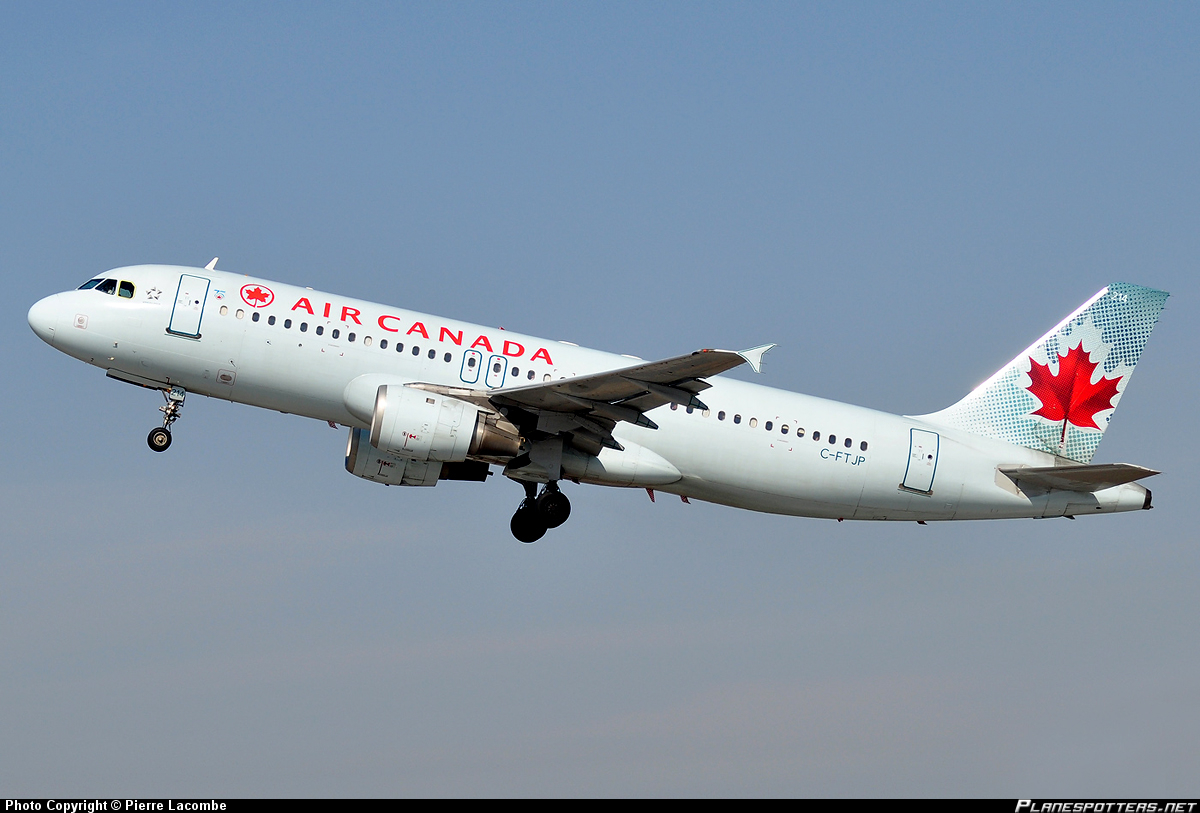



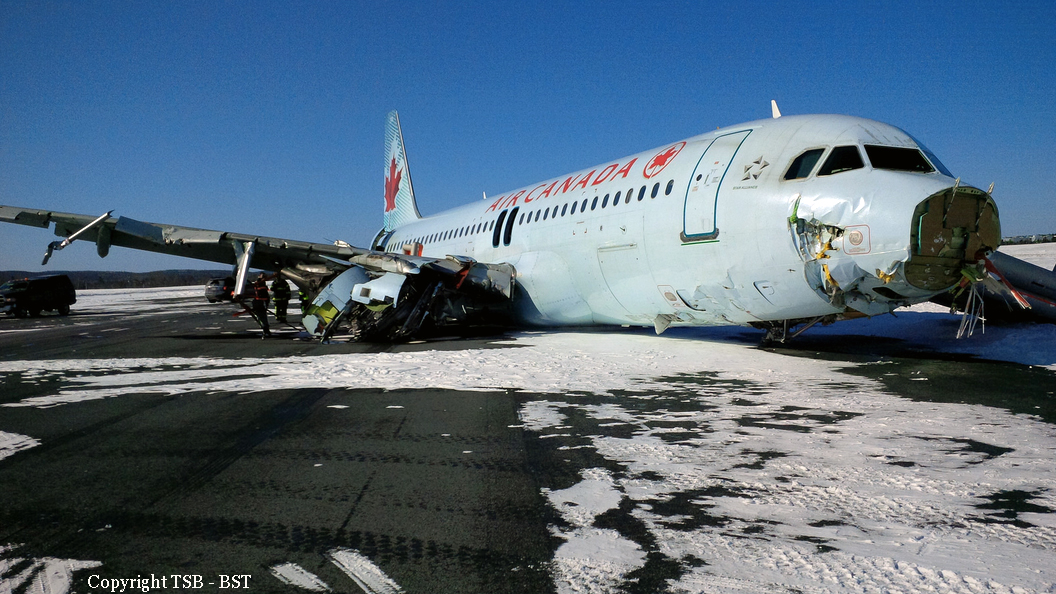

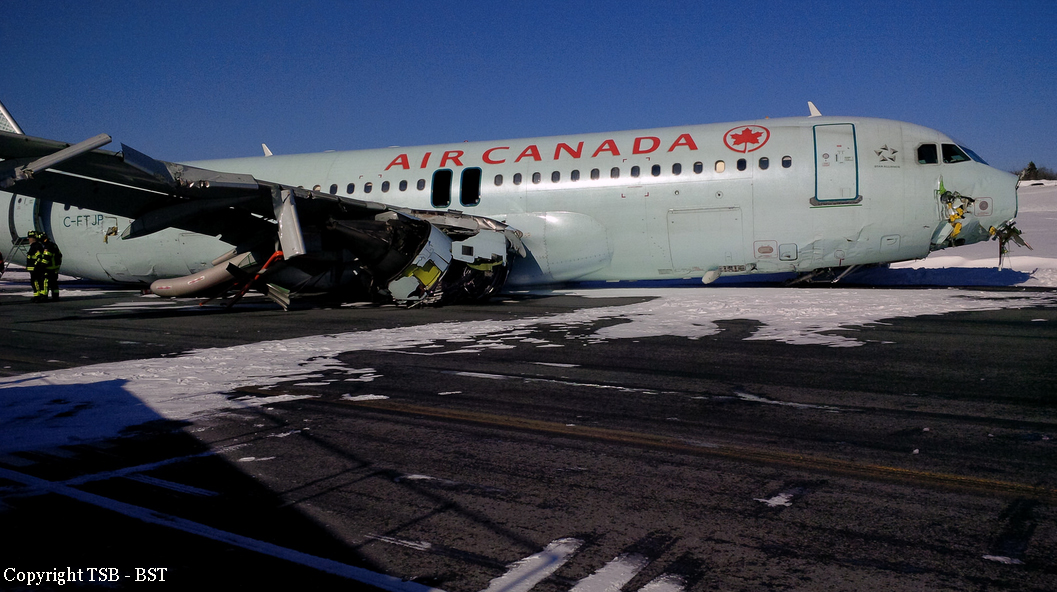
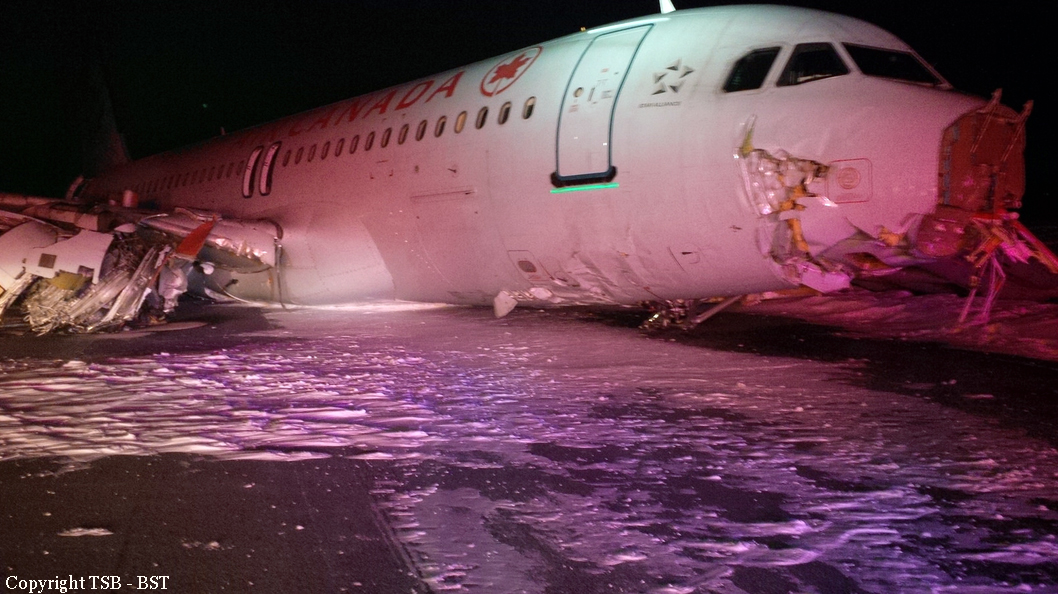
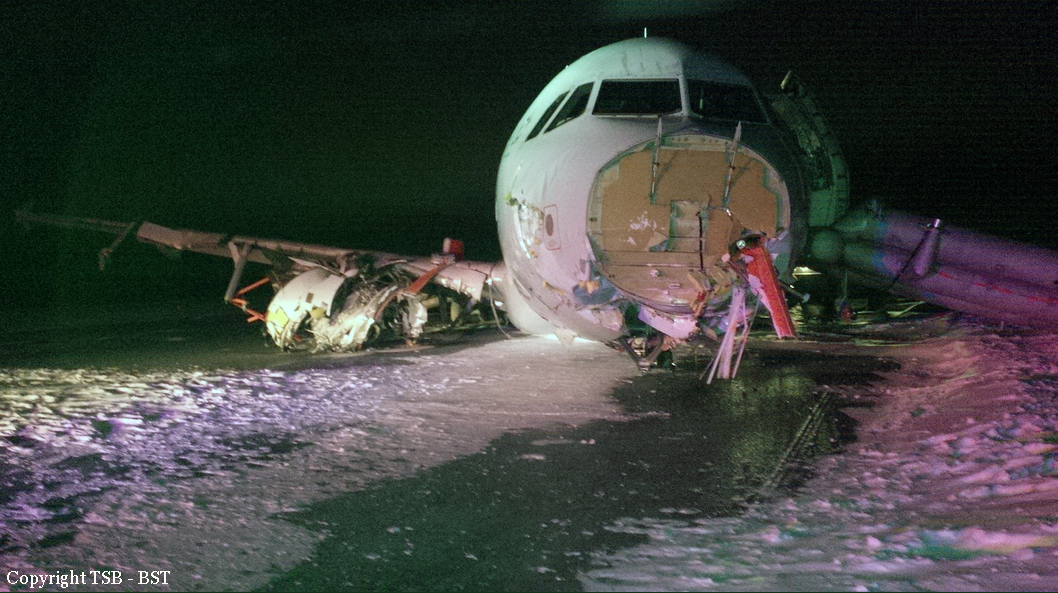
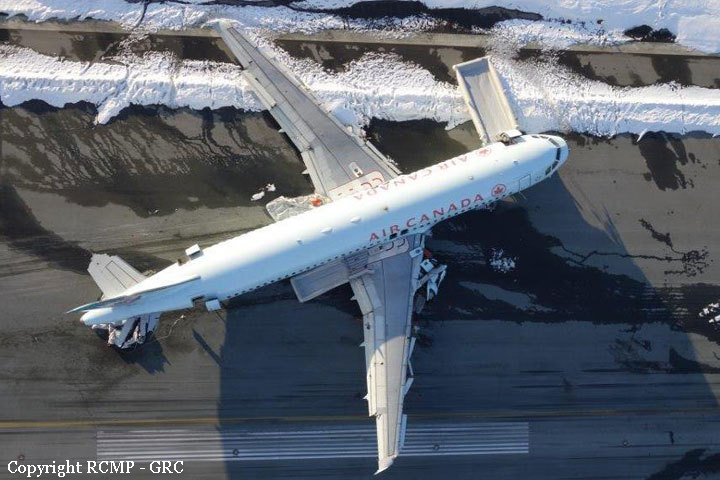
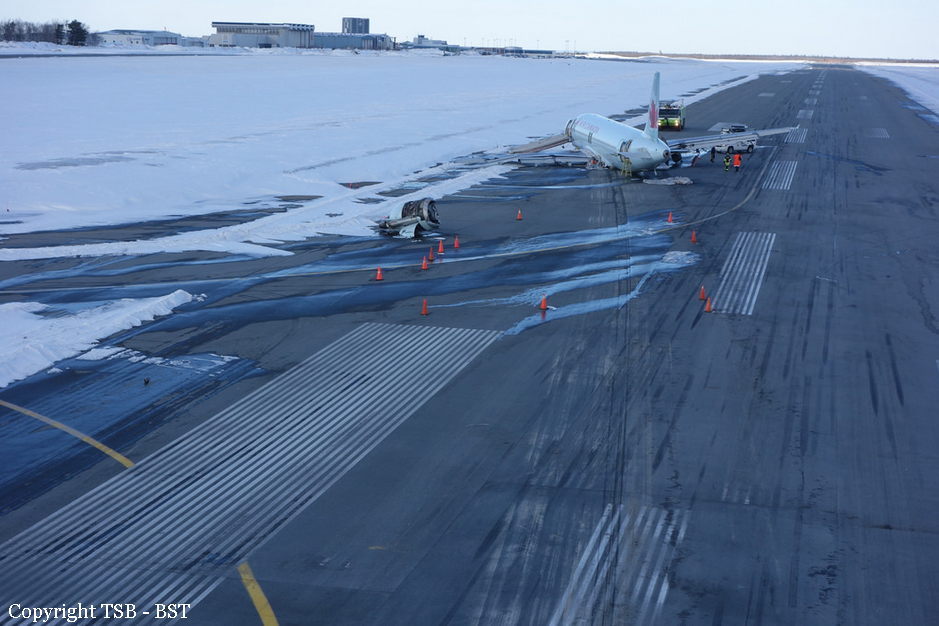

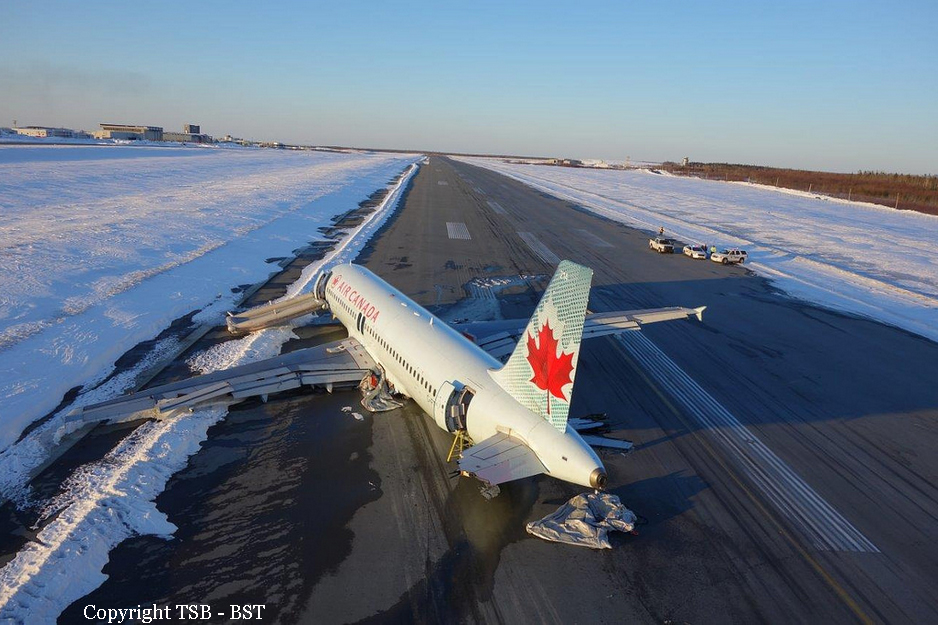
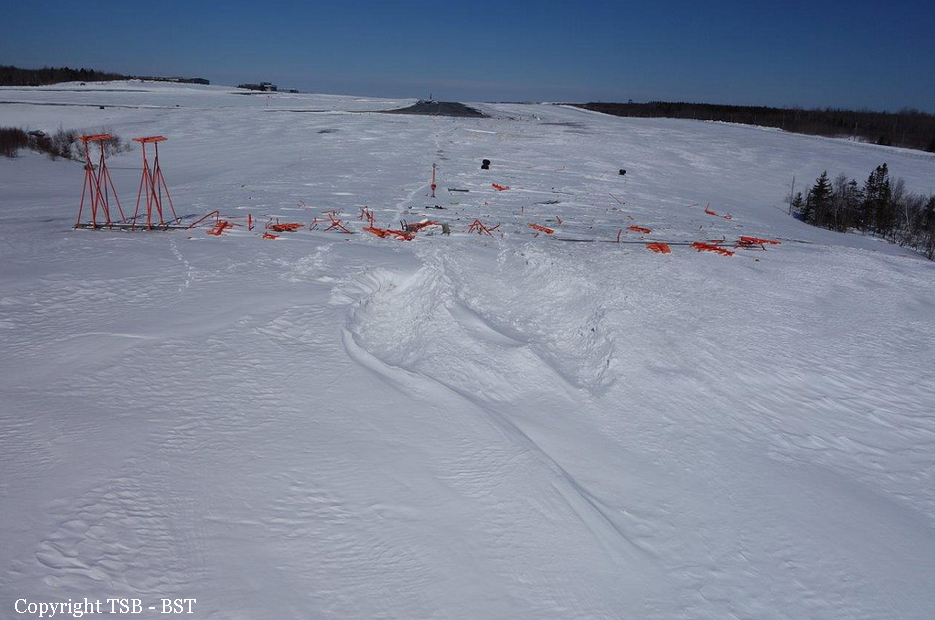
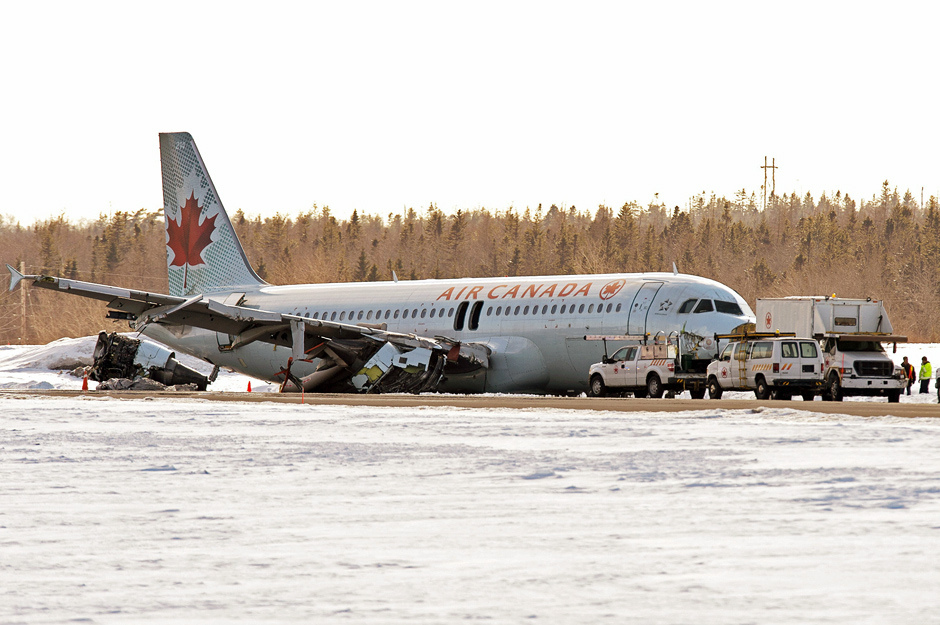
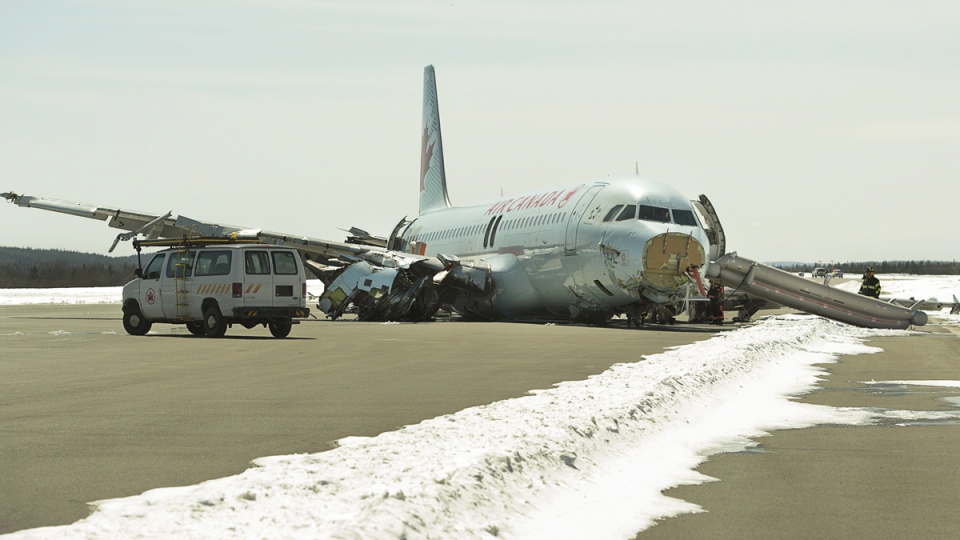

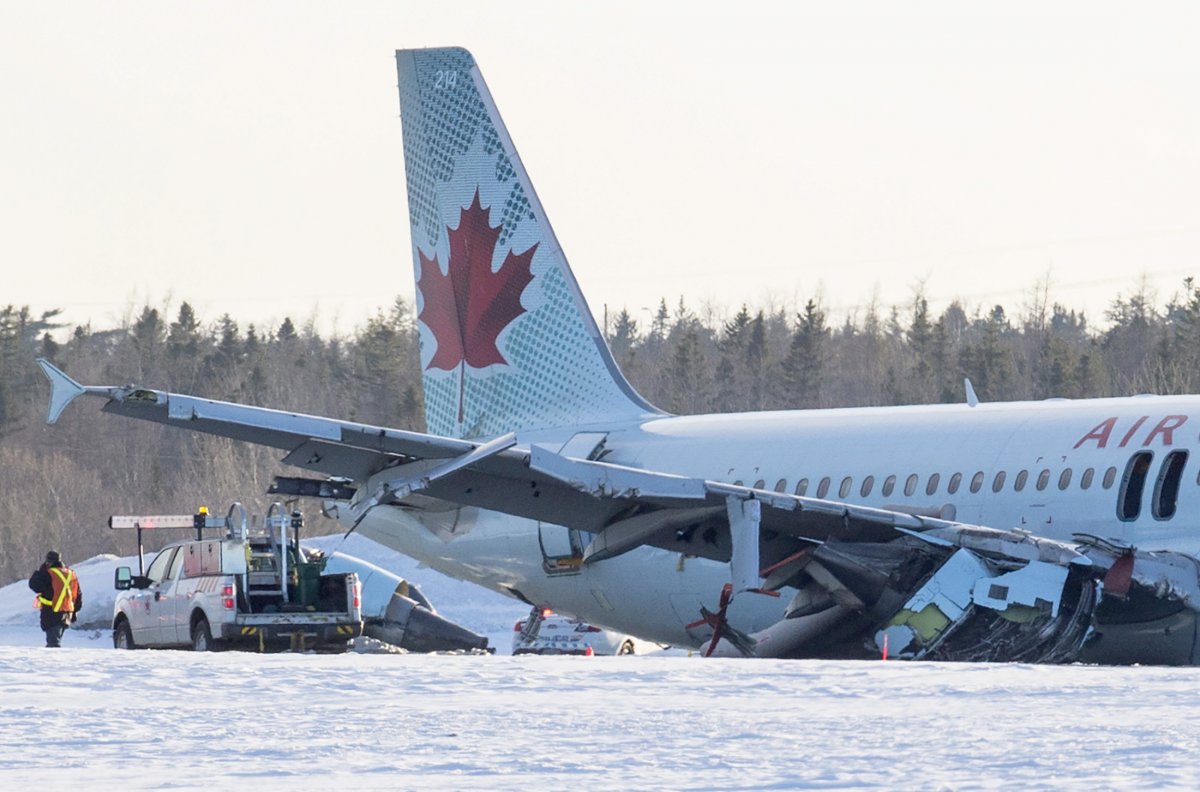
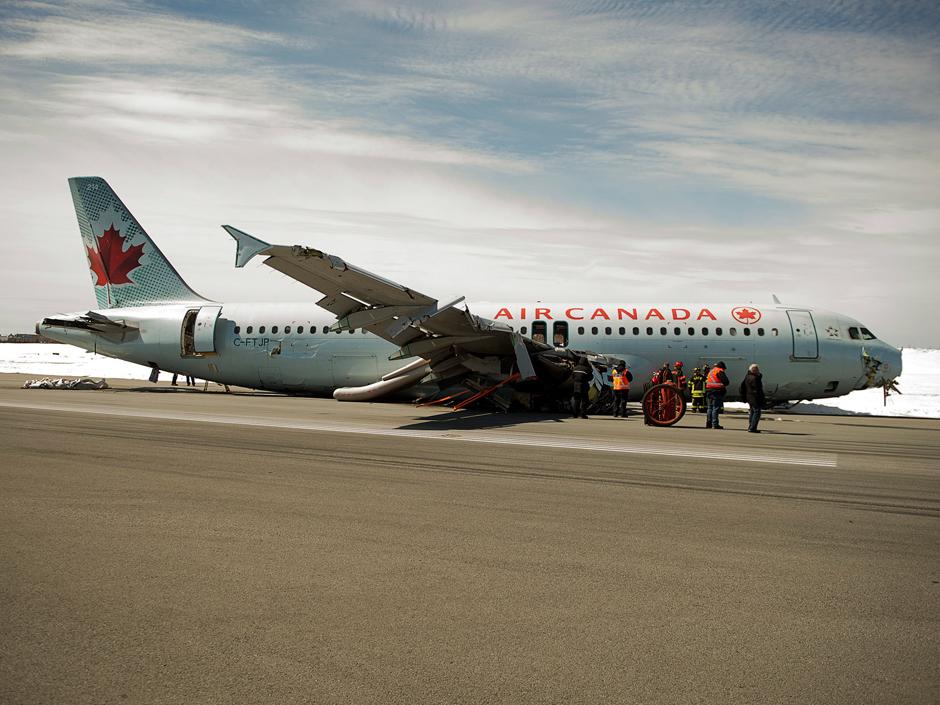
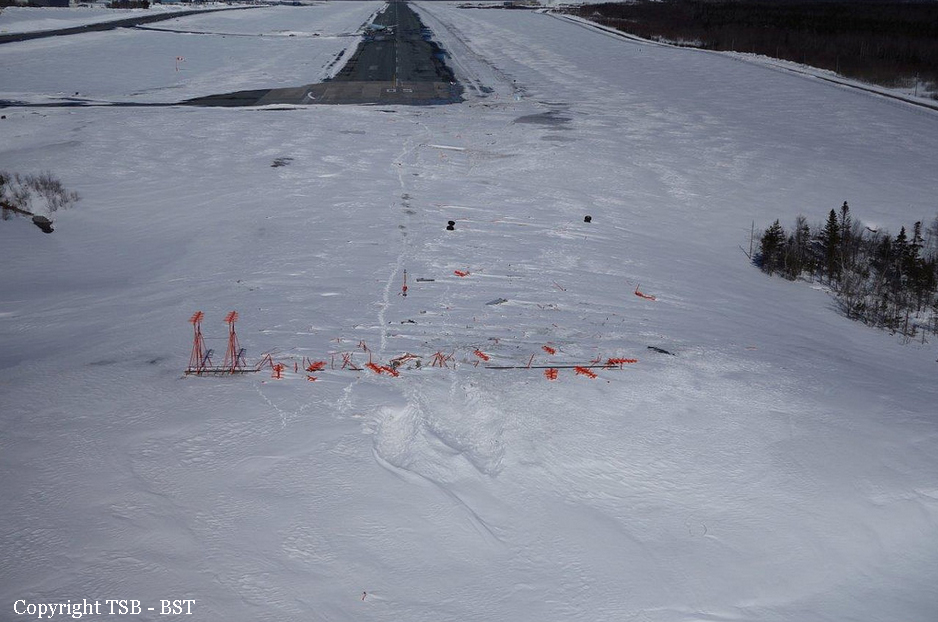
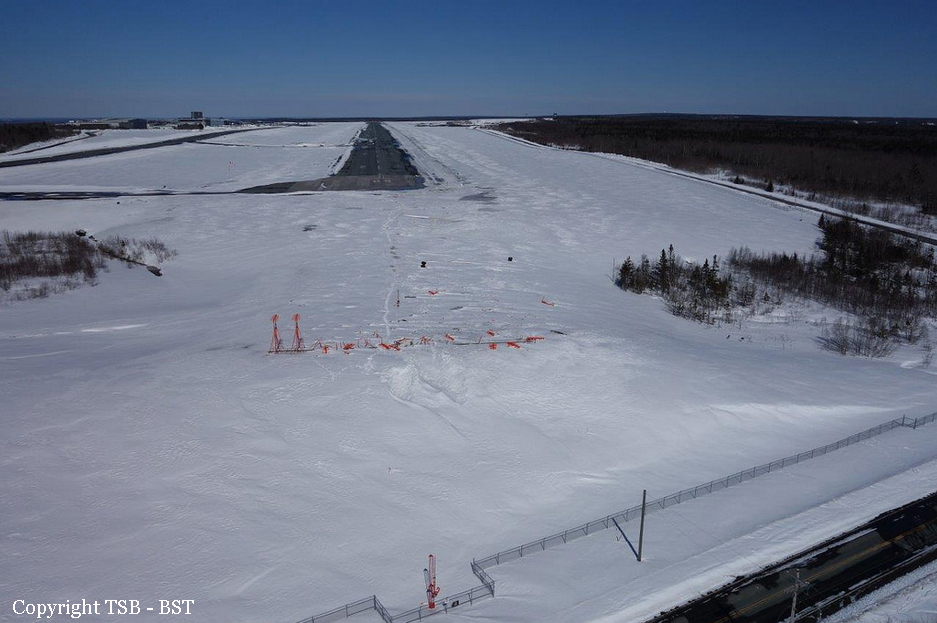
Crash of a Boeing 747-244BSF in Halifax: 7 killed
Date & Time:
Oct 14, 2004 at 0356 LT
Registration:
9G-MKJ
Survivors:
No
Schedule:
Windsor Locks - Halifax - Zaragoza
MSN:
22170
YOM:
1980
Flight number:
MKA1602
Crew on board:
7
Crew fatalities:
Pax on board:
0
Pax fatalities:
Other fatalities:
Total fatalities:
7
Aircraft flight hours:
80619
Aircraft flight cycles:
16368
Circumstances:
MKA1602 landed on Runway 24 at Halifax International Airport at 0512 and taxied to the ramp. After shutdown, loading of the aircraft was started. During the loading, two MK Airlines Limited crew members were observed sleeping in the upper deck passenger seats. After the fuelling was complete, the ground engineer checked the aircraft fuelling panel and signed the fuel ticket. The aircraft had been uploaded with 72 062 kg of fuel, for a total fuel load of 89 400 kg. The ground engineer then went to the main cargo deck to assist with the loading. Once the loading was complete, the ramp supervisor for the ground handling agent went to the upper deck to retrieve the MKA1602 cargo and flight documentation. While the loadmaster was completing the documentation, the ramp supervisor visited the cockpit and noted that the first officer was not in his seat. Approximately 10 minutes later, the ramp supervisor, with the documentation, left the aircraft. At 0647, the crew began taxiing the aircraft to position on Runway 24, and at 0653, the aircraft began its take-off roll. See Section 1.11.4 of this report for a detailed sequence of events for the take-off. During rotation, the aircraftís lower aft fuselage briefly contacted the runway. A few seconds later, the aircraftís lower aft fuselage contacted the runway again but with more force. The aircraft remained in contact with the runway and the ground to a point 825 feet beyond the end of the runway, where it became airborne and flew a distance of 325 feet. The lower aft fuselage then struck an earthen berm supporting an instrument landing system (ILS) localizer antenna. The aircraft's tail separated on impact, and the rest of the aircraft continued in the air for another 1200 feet before it struck terrain and burst into flames. The final impact was at latitude 44°52'51" N and longitude 063°30'31" W, approximately 2500 feet past the departure end of Runway 24, at an elevation of 403 feet above sea level (asl). The aircraft was destroyed by impact forces and post-crash fire. All persons on board (seven crew members) were fatally injured.
Probable cause:
Findings as to Causes and Contributing Factors:
1. The Bradley take-off weight was likely used to generate the Halifax take-off performance data, which resulted in incorrect V speeds and thrust setting being transcribed to the take-off data card.
2. The incorrect V speeds and thrust setting were too low to enable the aircraft to take off safely for the actual weight of the aircraft.
3. It is likely that the flight crew member who used the Boeing Laptop Tool (BLT) to generate take-off performance data did not recognize that the data were incorrect for the planned take-off weight in Halifax. It is most likely that the crew did not adhere to the operatorís procedures for an independent check of the take-off data card.
4. The pilots of MKA1602 did not carry out the gross error check in accordance with the company's standard operating procedures (SOPs), and the incorrect take-off performance data were not detected.
5. Crew fatigue likely increased the probability of error during calculation of the take-off performance data, and degraded the flight crewís ability to detect this error.
6. Crew fatigue, combined with the dark take-off environment, likely contributed to a loss of situational awareness during the take-off roll. Consequently, the crew did not recognize the inadequate take-off performance until the aircraft was beyond the point where the take-off could be safely conducted or safely abandoned.
7. The aircraftís lower aft fuselage struck a berm supporting a localizer antenna, resulting in the tail separating from the aircraft, rendering the aircraft uncontrollable.
8. The company did not have a formal training and testing program on the BLT, and it is likely that the user of the BLT in this occurrence was not fully conversant with the software.
Findings as to Risk:
1. Information concerning dangerous goods and the number of persons on board was not readily available, which could have jeopardized the safety of the rescue personnel and aircraft occupants.
2. Failure of one of the airport emergency power generators to provide backup power prevented the operation of some automatic functions at the fire hall after the crash alarm was activated, increasing the potential for a delayed response.
3. Grid map coordinates were not used to direct units responding to the crash and some responding units did not have copies of the grid map. The non-use of grid coordinates during an emergency could lead to confusion and increase response times.
4. Communication difficulties encountered by the emergency response agencies complicated coordination and could have hampered a rescue attempt or quick evacuation of an injured person.
5. A faulty aircraft cargo loading system prevented the proper positioning of a roll of steel, resulting in the weight limits of positions LR and MR being exceeded by 4678 kg (50 per cent).
6. The company increase of the maximum flight duty time for a heavy crew from 20 to 24 hours increased the potential for fatigue.
7. Regulatory oversight of MK Airlines Limited by the Ghana Civil Aviation Authority (GCAA) was not adequate to detect serious non-conformances to flight and duty times, nor ongoing non-adherence to company directions and procedures.
8. The delay in passing the new Civil Aviation Act, 2004 hindered the GCAAís ability to exercise effective oversight of MK Airlines Limited.
9. Company planning and execution of very long flight crew duty periods substantially increased the potential for fatigue.
10. The company expansion, flight crew turnover, and the MK Airlines Limited recruitment policy resulted in a shortage of flight crew; consequently, fewer crews were available to meet operational demands, increasing stress and the potential for fatigue.
11. There were no regulations or company rules governing maximum duty periods for loadmasters and ground engineers, resulting in increased potential for fatigue-induced errors.
12. The MK Airlines Limited flight operations quality and flight safety program was in the early stages of development at the time of the accident; consequently, it had limited effectiveness.
13. The berms located at either end of runways 06 and 24 were not evaluated as to whether they were a hazard to aircraft in the runway overrun/undershoot areas.
14. The operating empty weight of the aircraft did not include 1120 kg of personnel and equipment; consequently, it was possible that the maximum allowable aircraft weights could be exceeded unknowingly.
15. The ground handling agent at Halifax International Airport did not have the facilities to weigh built-up pallets that were provided by others. Incorrect load weights could result in adverse aircraft performance.
16. Some MK Airlines Limited flight crew members did not adhere to all company SOPs; company and regulatory oversight did not address this deficiency.
Other Findings:
1. An incorrect slope for Runway 24 was published in error and not detected; the effect of this discrepancy was not a significant factor in the operation of MKA1602 at Halifax.
2. The occurrence aircraft was within the weight and centre of gravity limits for the occurrence flight, although the allowable cargo weights on positions LR and MR were exceeded.
3. Based on engineering simulation, the accident aircraft performance was consistent with that expected for the configuration, weight and conditions for the attempted take-off at Halifax International Airport.
4. There have been several examples of incidents and accidents worldwide where non-adherence to procedures has led to incorrect take-off data being used, and the associated flight crews have not recognized the inadequate take-off performance. 5. No technical fault was found with the aircraft or engines that would have contributed to the accident.
1. The Bradley take-off weight was likely used to generate the Halifax take-off performance data, which resulted in incorrect V speeds and thrust setting being transcribed to the take-off data card.
2. The incorrect V speeds and thrust setting were too low to enable the aircraft to take off safely for the actual weight of the aircraft.
3. It is likely that the flight crew member who used the Boeing Laptop Tool (BLT) to generate take-off performance data did not recognize that the data were incorrect for the planned take-off weight in Halifax. It is most likely that the crew did not adhere to the operatorís procedures for an independent check of the take-off data card.
4. The pilots of MKA1602 did not carry out the gross error check in accordance with the company's standard operating procedures (SOPs), and the incorrect take-off performance data were not detected.
5. Crew fatigue likely increased the probability of error during calculation of the take-off performance data, and degraded the flight crewís ability to detect this error.
6. Crew fatigue, combined with the dark take-off environment, likely contributed to a loss of situational awareness during the take-off roll. Consequently, the crew did not recognize the inadequate take-off performance until the aircraft was beyond the point where the take-off could be safely conducted or safely abandoned.
7. The aircraftís lower aft fuselage struck a berm supporting a localizer antenna, resulting in the tail separating from the aircraft, rendering the aircraft uncontrollable.
8. The company did not have a formal training and testing program on the BLT, and it is likely that the user of the BLT in this occurrence was not fully conversant with the software.
Findings as to Risk:
1. Information concerning dangerous goods and the number of persons on board was not readily available, which could have jeopardized the safety of the rescue personnel and aircraft occupants.
2. Failure of one of the airport emergency power generators to provide backup power prevented the operation of some automatic functions at the fire hall after the crash alarm was activated, increasing the potential for a delayed response.
3. Grid map coordinates were not used to direct units responding to the crash and some responding units did not have copies of the grid map. The non-use of grid coordinates during an emergency could lead to confusion and increase response times.
4. Communication difficulties encountered by the emergency response agencies complicated coordination and could have hampered a rescue attempt or quick evacuation of an injured person.
5. A faulty aircraft cargo loading system prevented the proper positioning of a roll of steel, resulting in the weight limits of positions LR and MR being exceeded by 4678 kg (50 per cent).
6. The company increase of the maximum flight duty time for a heavy crew from 20 to 24 hours increased the potential for fatigue.
7. Regulatory oversight of MK Airlines Limited by the Ghana Civil Aviation Authority (GCAA) was not adequate to detect serious non-conformances to flight and duty times, nor ongoing non-adherence to company directions and procedures.
8. The delay in passing the new Civil Aviation Act, 2004 hindered the GCAAís ability to exercise effective oversight of MK Airlines Limited.
9. Company planning and execution of very long flight crew duty periods substantially increased the potential for fatigue.
10. The company expansion, flight crew turnover, and the MK Airlines Limited recruitment policy resulted in a shortage of flight crew; consequently, fewer crews were available to meet operational demands, increasing stress and the potential for fatigue.
11. There were no regulations or company rules governing maximum duty periods for loadmasters and ground engineers, resulting in increased potential for fatigue-induced errors.
12. The MK Airlines Limited flight operations quality and flight safety program was in the early stages of development at the time of the accident; consequently, it had limited effectiveness.
13. The berms located at either end of runways 06 and 24 were not evaluated as to whether they were a hazard to aircraft in the runway overrun/undershoot areas.
14. The operating empty weight of the aircraft did not include 1120 kg of personnel and equipment; consequently, it was possible that the maximum allowable aircraft weights could be exceeded unknowingly.
15. The ground handling agent at Halifax International Airport did not have the facilities to weigh built-up pallets that were provided by others. Incorrect load weights could result in adverse aircraft performance.
16. Some MK Airlines Limited flight crew members did not adhere to all company SOPs; company and regulatory oversight did not address this deficiency.
Other Findings:
1. An incorrect slope for Runway 24 was published in error and not detected; the effect of this discrepancy was not a significant factor in the operation of MKA1602 at Halifax.
2. The occurrence aircraft was within the weight and centre of gravity limits for the occurrence flight, although the allowable cargo weights on positions LR and MR were exceeded.
3. Based on engineering simulation, the accident aircraft performance was consistent with that expected for the configuration, weight and conditions for the attempted take-off at Halifax International Airport.
4. There have been several examples of incidents and accidents worldwide where non-adherence to procedures has led to incorrect take-off data being used, and the associated flight crews have not recognized the inadequate take-off performance. 5. No technical fault was found with the aircraft or engines that would have contributed to the accident.
Final Report:
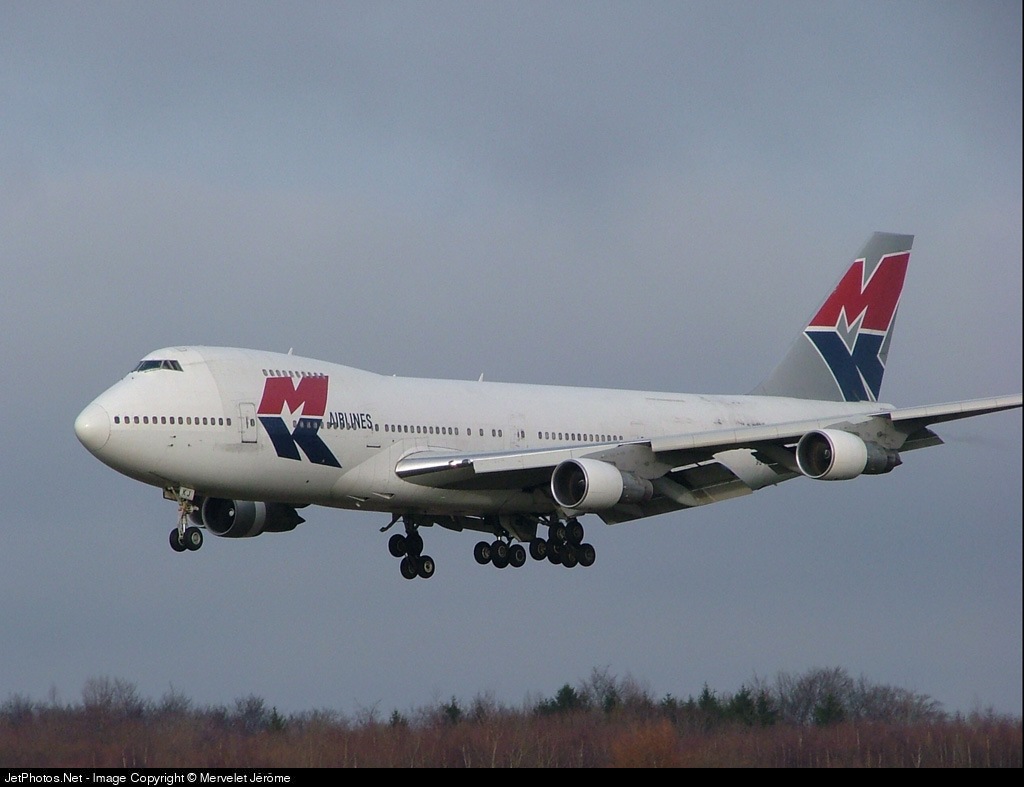
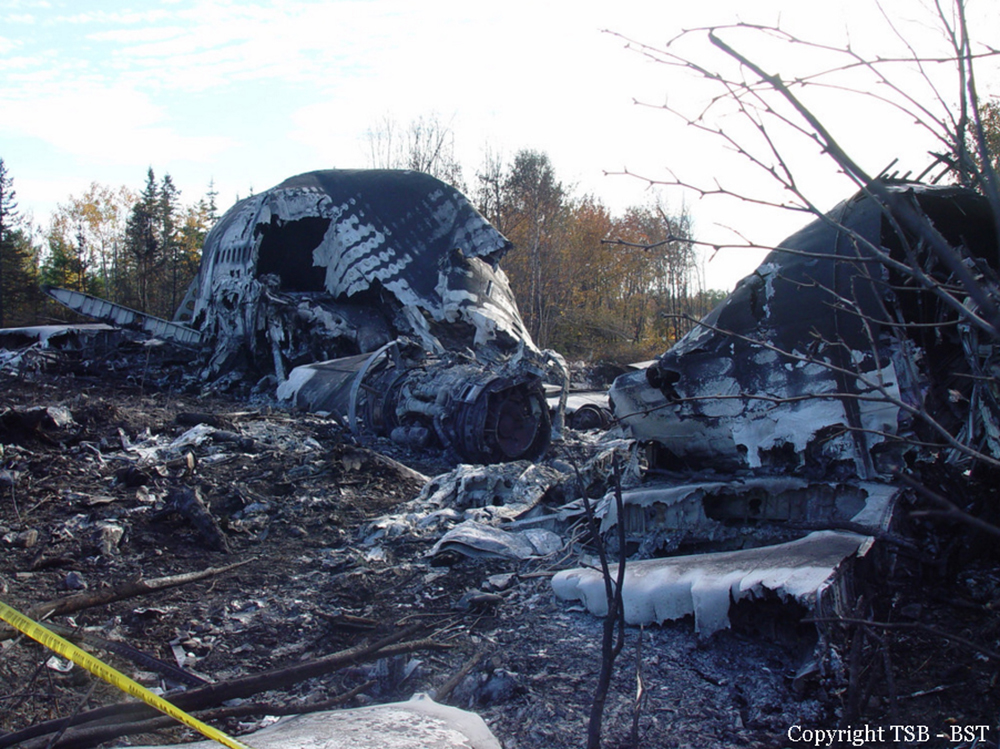
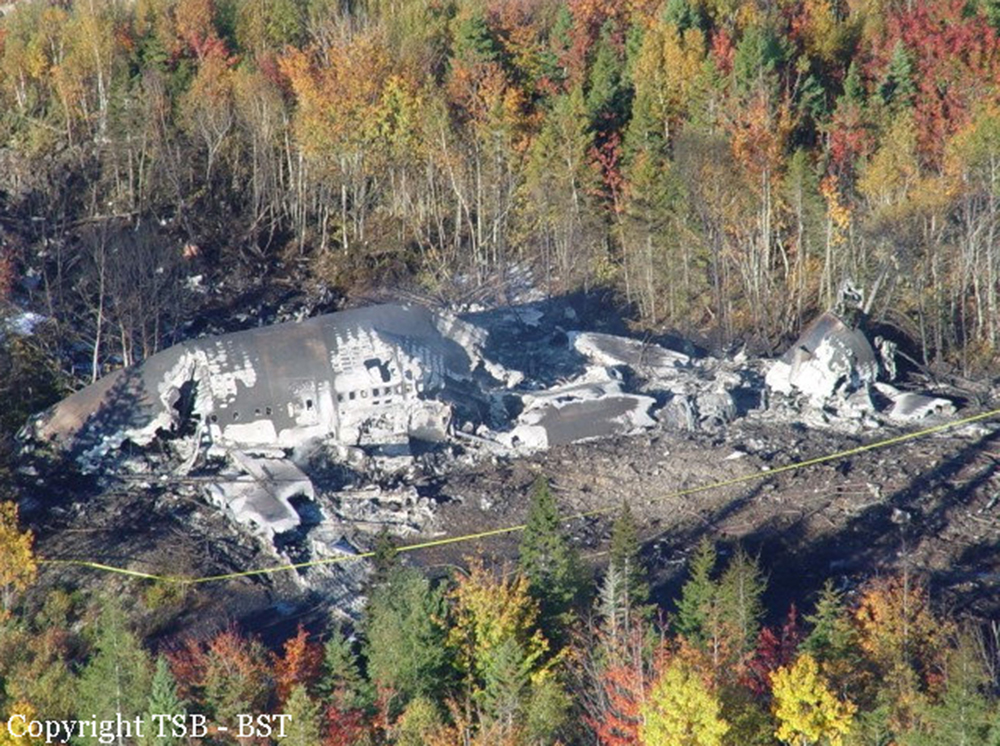
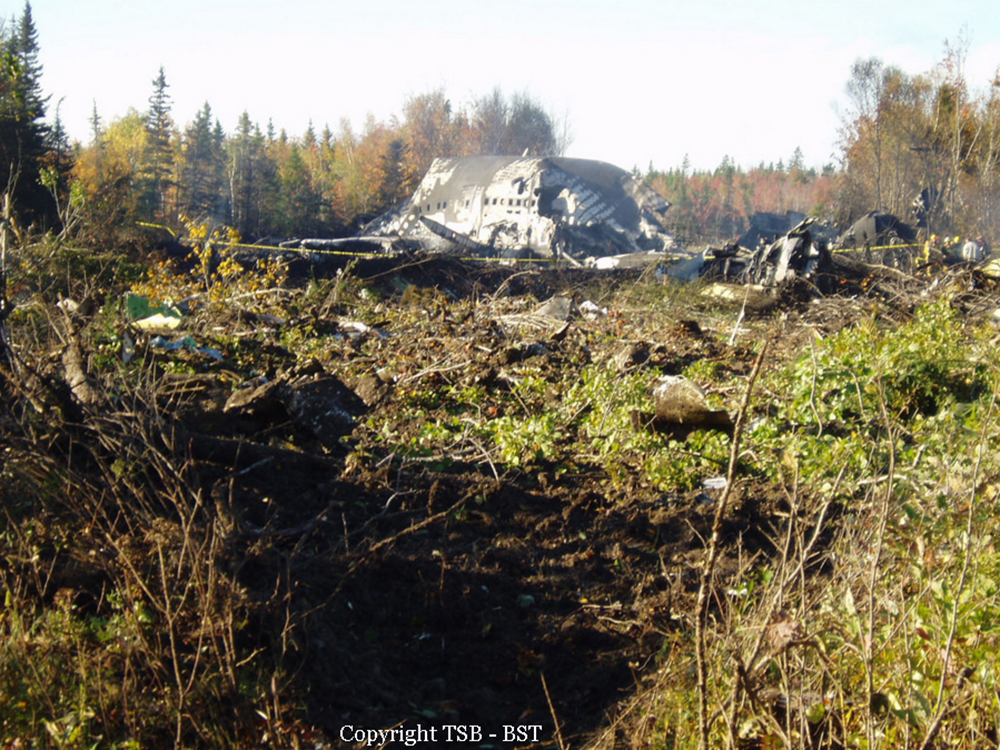
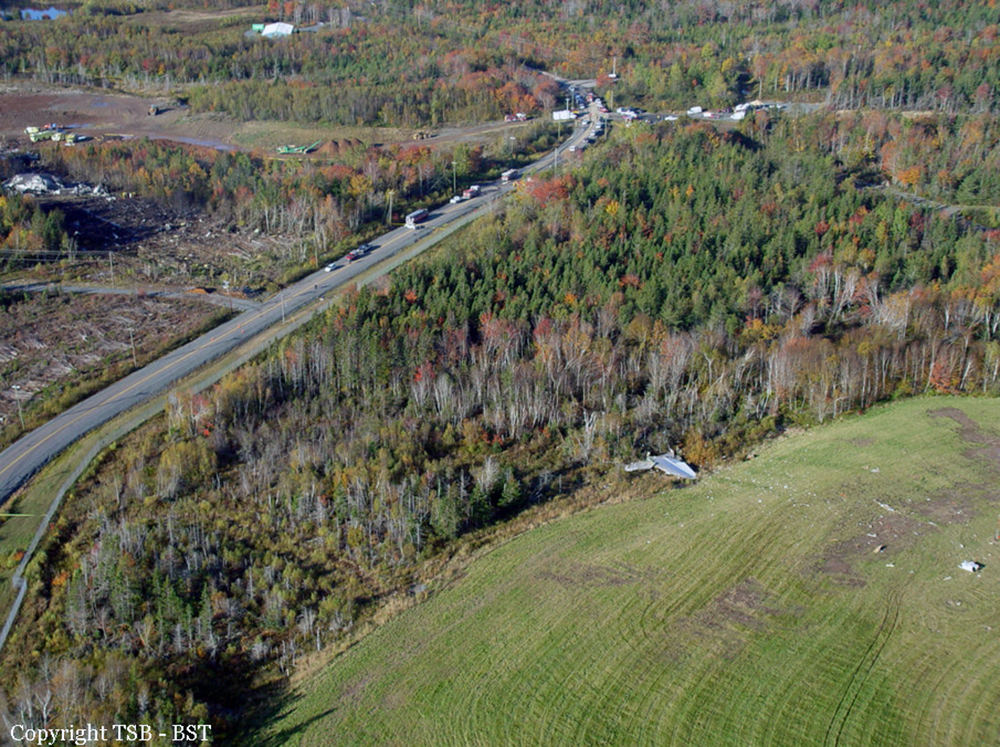
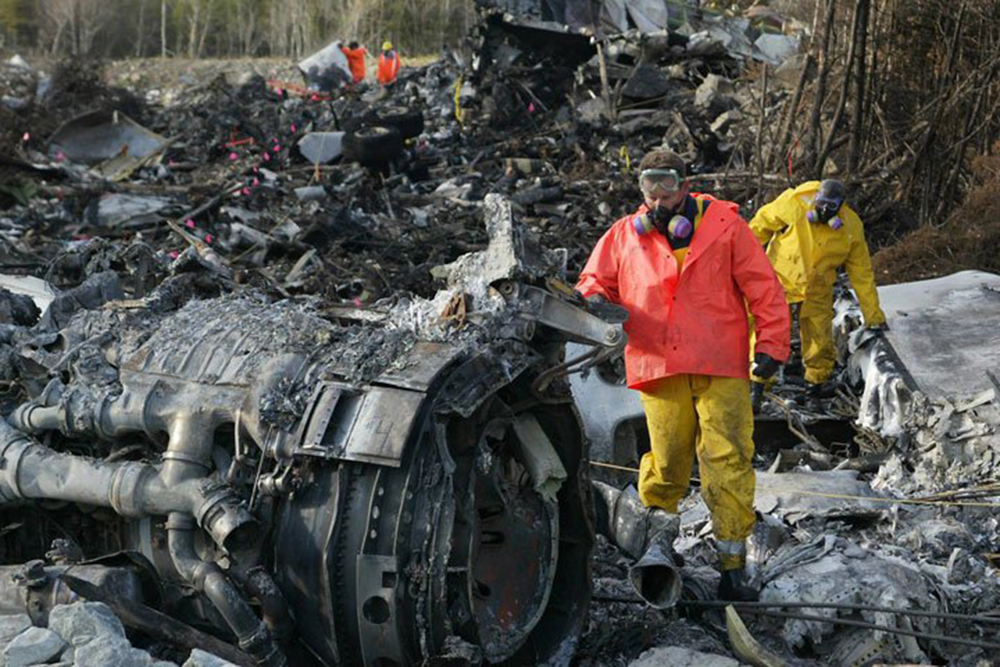

Crash of a Boeing 737-2E1F in Saint John's
Date & Time:
Apr 4, 2001 at 0615 LT
Registration:
C-GDCC
Survivors:
Yes
Schedule:
Hamilton – Montréal – Halifax – Saint John’s
MSN:
20681
YOM:
1973
Crew on board:
2
Crew fatalities:
Pax on board:
0
Pax fatalities:
Other fatalities:
Total fatalities:
0
Circumstances:
At 2320, Newfoundland daylight time, on 03 April 2001, the Royal Cargo flight, a Boeing 737-200, left Mirabel, Quebec, for a scheduled instrument flight rules cargo flight with two pilots on board. The flight was headed for Hamilton, Ontario; Mirabel; Halifax, Nova Scotia; St. John's, Newfoundland; and Mirabel. The flights from Mirabel to Halifax were uneventful. Before departure from Halifax, the pilot flying (PF) received the latest weather information for the flight to St. John's from the company dispatch; he did not ask for, or receive, the latest notices to airmen (NOTAMs). At 0545, the aircraft departed Halifax for St. John's. The PF was completing his line indoctrination training after having recently upgraded to captain. The training captain, who was the pilot not flying (PNF), occupied the right seat. After departure from Halifax, he contacted Halifax Flight Service Station (FSS) and received the latest weather report for St. John's, the 0530 aviation routine weather report (METAR). The weather was as follows: wind 050° magnetic (M) at 35, gusting to 40, knots; visibility 1 statute mile in light snow and blowing snow; ceiling 400 feet overcast; temperature -1°C; dew point -2°C; and altimeter 29.41 inches of mercury. The FSS passed runway surface condition (RSC) reports for both runways (11/29 and 16/34), including Canadian runway friction index (CRFI) readings of 0.25 for Runway 11/29 and 0.24 for Runway 16/34. The FSS specialist also provided the NOTAMs for St. John's, which included a NOTAM released more than five hours earlier advising of the unserviceability of the instrument landing system (ILS) for Runway 11. The flight crew had initially planned an ILS approach, landing on Runway 11 at St. John's. Because of the marginal weather, the loss of Runway 11/29, and his greater experience, the training captain decided to switch seats and assume the duties and full responsibilities as captain and PF. Returning to Halifax was not considered because the aircraft would be overweight for landing there. The option of diverting the flight to the alternate airport was also discussed by the crew; however, in the end, they felt that a safe landing was achievable in St. John's. At 0638:27, the PF contacted St. John's tower to ask if the approach to Runway 34 was still an option. The response indicated that Runway 34 was probably the only option because of the wind: 050°M (estimated) at 35, gusting to 40, knots. The ILS on Runway 11 was unserviceable, and the glidepath for Runway 29 was unserviceable. The only instrument approaches available were the localizer back course Runway 34 and the ILS Runway 16. Also, at about 0638, the Gander Area Control Centre (ACC) controller suggested to the crew that they obtain the 0630 automatic terminal information service (ATIS) for St. John's. The ATIS was reporting surface winds of 055°M at 20, gusting to 35, knots. The PNF attempted to obtain the ATIS information; however, because of a simultaneous radio transmission on the second VHF radio between the PF and St. John's tower, the ATIS information was not obtained. At 0641, the PNF contacted Gander ACC, which reported the winds at St. John's as 040°M at 13, gusting to 18, knots. The PNF pointed out the discrepancy in the two wind reports to the PF; however, there was no acknowledgement of the significance of the discrepancy. It was later determined that the discrepancy was an unserviceable anemometer at the St. John's airport due to ice accretion on the anemometer. The anemometer was providing a direct reading of the incorrect wind information to Gander ACC. Gander ACC was unaware of the unserviceability and unknowingly passed the incorrect wind information on to the flight crew. At 0644, Gander ACC transmitted a significant meteorological report (SIGMET), issued at 0412 and valid from 0415 to 0815, that included St. John's. The SIGMET forecast severe mechanical turbulence below 3000 feet due to surface wind gusts in excess of 50 knots. However, the crew may not have been listening to the SIGMET broadcast: while the ACC transmitted the SIGMET, the crew were discussing the application of an 18-knot quartering tailwind for the approach to Runway 16. This tailwind was well under the 50 knots described by the SIGMET. The crew did not acknowledge receipt of the SIGMET until prompted by the controller. Before the descent into St. John's, the crew discussed approach options. The approach to Runway 11 was discounted because of the unserviceability of the ILS, and Runway 34 was eliminated as an option because the weather was below its published approach minimums. The crew discussed the ILS approach to Runway 16. Although the PNF expressed concern about the tailwind, it was decided to attempt the approach because the wind reported by Gander ACC was within the aircraft's landing limits. In calculating the approach speed in preparation for the approach, there was confusion during the application of the tailwind and gust corrections to the landing reference speed (Vref ). The crew had correctly established a flap-30 Vref of 132 knots indicated airspeed (KIAS) and ultimately an approach speed of 142 KIAS. The approach speed calculations were derived using the incorrect wind information from Gander ACC; further, the crew added five knots for the gust increment to the nominal approach speed (Vref + 5 knots), that is, Vref + 10 knots. This incorrect calculation (adding the gust factor) was consistent with company practice at the time of the accident. During the descent, the crew also had difficulty completing the descent and approach checklists; there were several missteps and repeated attempts at completion of checks. Clearance for an ILS approach to Runway 16 was obtained from Gander ACC , and the crew was advised to contact St. John's tower. Just over two minutes before landing, the tower advised that the wind was 050°M (estimated) at 20, gusting to 35, knots and provided the following RSC report for Runway 16: Full length 170 feet wide, surface 30% very light dusting of snow and 70% compact snow and ice; remainder is 20% light snow, 80% compact snow and ice, windrow along the east side of the runway; friction index 0.20; and temperature -1°C at 0925. The aircraft crossed the final approach fix on the ILS glideslope at 150 KIAS. During the final approach, the airspeed steadily increased to 180 KIAS (ground speed 190 knots); the glidepath was maintained with a descent rate of 1000 feet per minute. From 1000 feet above sea level, no airspeed calls were made; altitude calls were made and responses were made. The Royal Boeing 737 operations manual states that the PNF shall call out significant deviations from programmed airspeed. In the descent, through 900 feet above sea level, the aircraft encountered turbulence resulting in uncommanded roll and pitch deviations and airspeed fluctuations of +/- 11 knots. At about 300 feet above decision height, the crew acquired visual references for landing. Approximately one minute before landing, St. John's tower transmitted the runway visual range, repeated the estimated surface wind (050°M [estimated] at 20, gusting to 35, knots), and issued a landing clearance to the aircraft; the PNF acknowledged this information. The aircraft touched down at 164 KIAS (27 KIAS above the desired touchdown speed of Vref), 2300 to 2500 feet beyond the threshold. Radar ground speed at touchdown was 180 knots. The wind at this point was determined to be about 050°M at 30 knots. Shortly after touchdown, the speed brakes and thrust reversers were deployed, and an engine pressure ratio (EPR) of 1.7 was reached 10 seconds after touchdown. Longitudinal deceleration was -0.37g within 1.3 seconds of touchdown, suggesting that a significant degree of effective wheel braking was achieved. With approximately 1100 feet of runway remaining, through a speed of 64 KIAS, reverse thrust increased to about 1.97 EPR on engine 1 and 2.15 EPR on engine 2. As the aircraft approached the end of the runway, the captain attempted to steer the aircraft to the right, toward the Delta taxiway intersection. Twenty-two seconds after touchdown, the aircraft exited the departure end of the runway into deep snow. The aircraft came to rest approximately 75 feet beyond and 53 feet to the right of the runway centreline on a heading of 235°M.
Probable cause:
Findings as to Causes and Contributing Factors:
1. A combination of excessive landing speed, extended touchdown point, and low runway friction coefficient resulted in the aircraft overrunning the runway.
Findings as to Risk:
1. Before departure from Halifax, the flight crew did not request nor did dispatch personnel inform the crew of the notice to airmen (NOTAM) advising of the instrument landing system's failure for Runway 11 at St. John's International Airport.
2. The St. John's dynamic wind information provided to the Gander Area Control Centre controller was inaccurate. The controller was not aware of this inaccuracy.
3. The crew applied tailwind corrections in accordance with company practices; however, these practices were not in accordance with those stated in the operations manual.
1. A combination of excessive landing speed, extended touchdown point, and low runway friction coefficient resulted in the aircraft overrunning the runway.
Findings as to Risk:
1. Before departure from Halifax, the flight crew did not request nor did dispatch personnel inform the crew of the notice to airmen (NOTAM) advising of the instrument landing system's failure for Runway 11 at St. John's International Airport.
2. The St. John's dynamic wind information provided to the Gander Area Control Centre controller was inaccurate. The controller was not aware of this inaccuracy.
3. The crew applied tailwind corrections in accordance with company practices; however, these practices were not in accordance with those stated in the operations manual.
Final Report:





